Tom's Hardware Verdict
The Asus TUF Gaming 450W is one of the best budget-oriented PSUs that you will find in today's market. If the native cables are not a problem, you should consider it for a low-energy consumption system.
Pros
- +
Full power at 42 degrees Celsius
- +
High overall performance
- +
Efficient
- +
Tight load regulation
- +
Low ripple
- +
Quiet operation
- +
Alternative Low Power Modes support
- +
Good soldering quality
- +
Double ball-bearing fan
- +
(Very) long EPS cable
- +
Adequate distance between the 4-pin Molex connectors
- +
6-year warranty
Cons
- -
Short hold-up time
- -
Mediocre transient response
- -
High inrush currents
- -
High OCP triggering points on the minor rails
- -
Low PF with 230V
- -
12V Voltage step during the turn-on transient tests
Why you can trust Tom's Hardware
The Asus TUF Gaming 450W Bronze is a low-capacity and affordable PSU destined for systems with low energy demands. If fixed cables are not a big issue, you should include it in your buy list since it offers high-performance thanks to the modern platform that it uses. If the price is right at any given time, it can compete with the best PSUs, including the value-conscious XPG Pylon 450.
The lowest member of the Asus TUF-Gaming line has 450W maximum power, so it is ideal for office PCs or download stations with low energy demands. From the moment, Corsair decided to substitute the CX line with the semi-modular CXM units, which use a less advanced but still competent platform, Asus is the only one offering Bronze efficiency (Silver in Cybenetics) PSUs, featuring a half-bridge topology and LLC resonant converters. Corsair dropped this platform because of the increased cost. Other major brands, including XPG and Thermaltake, also used older designs with some updates to achieve similar performance.
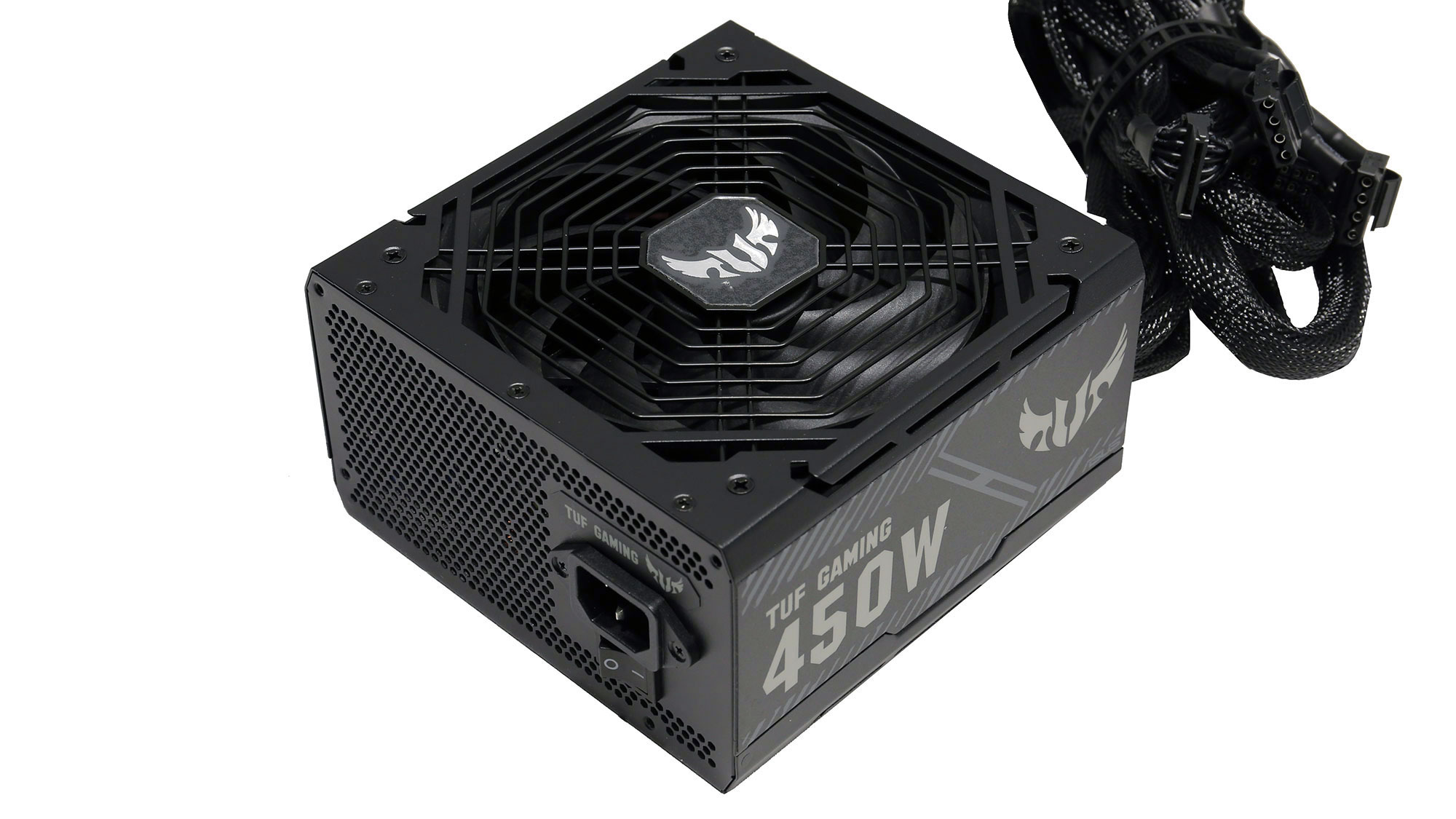
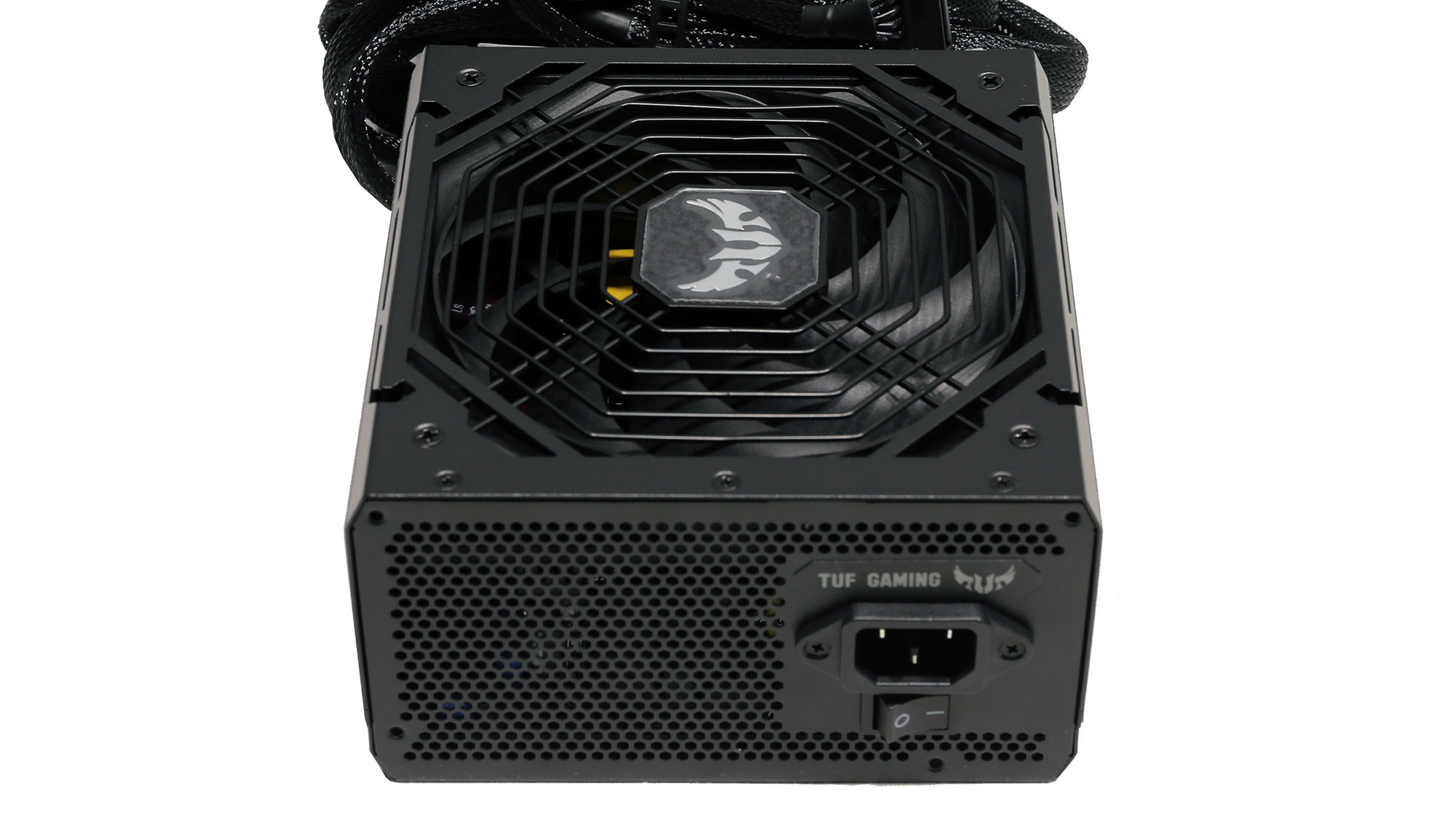
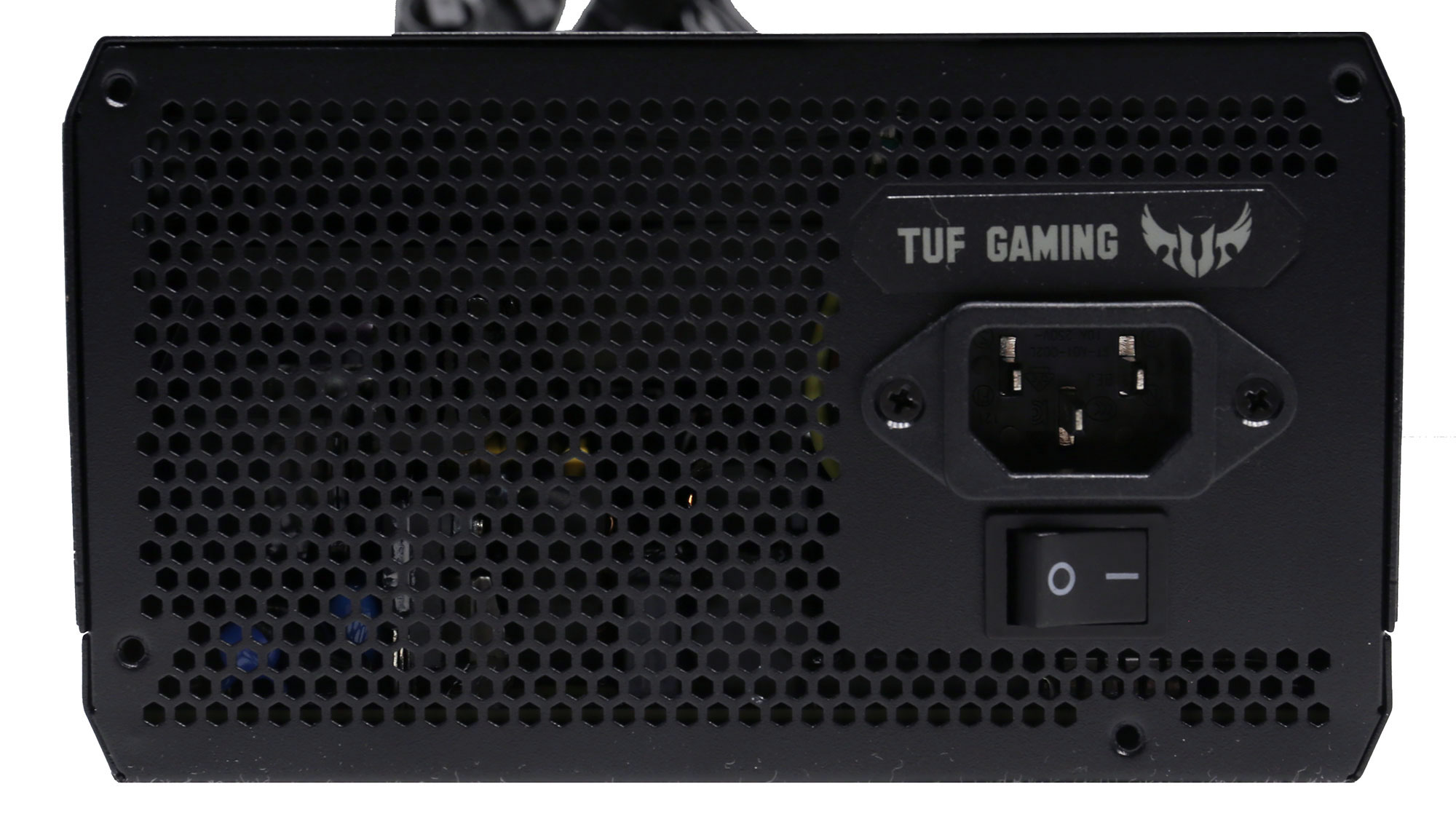
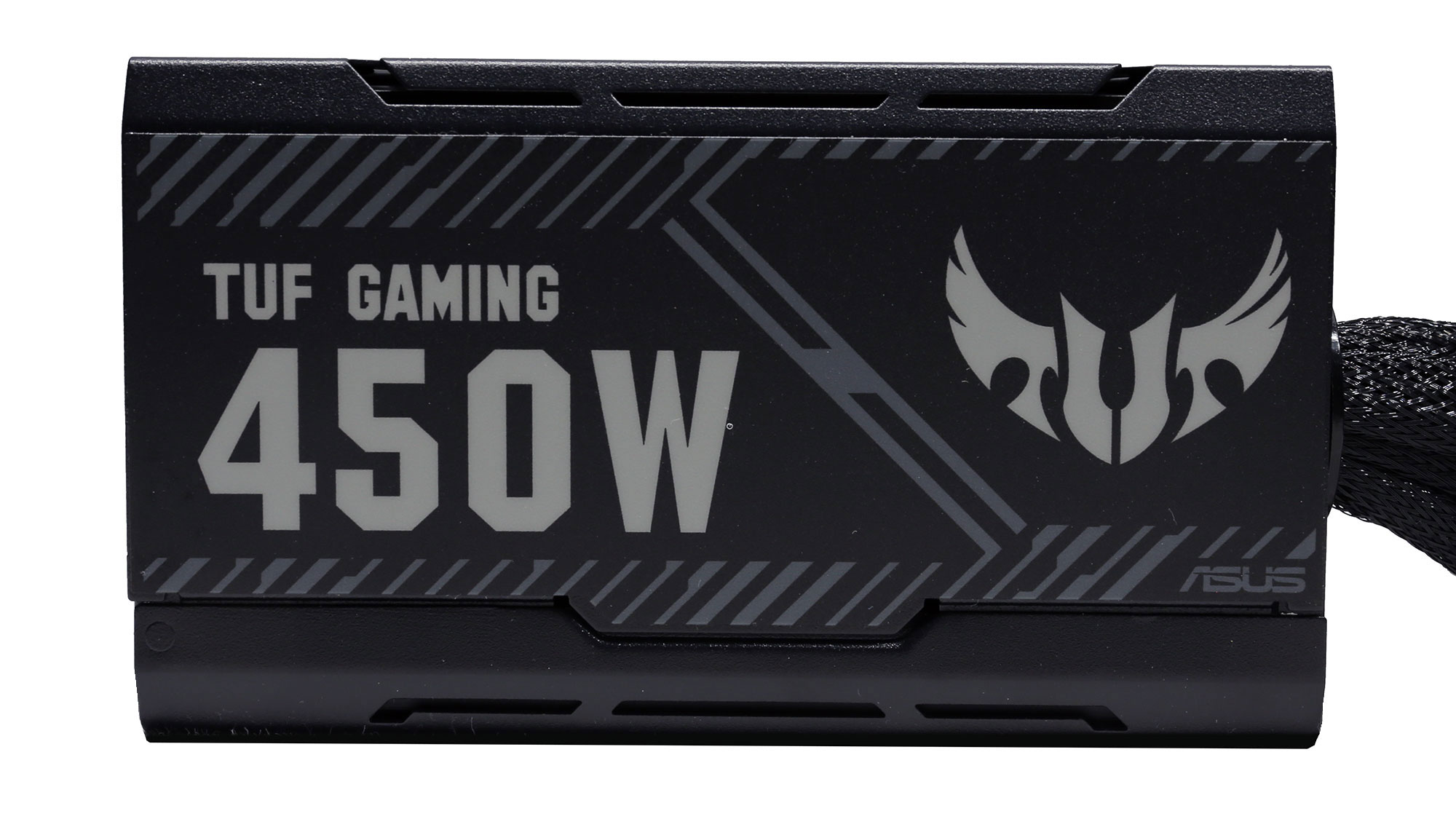
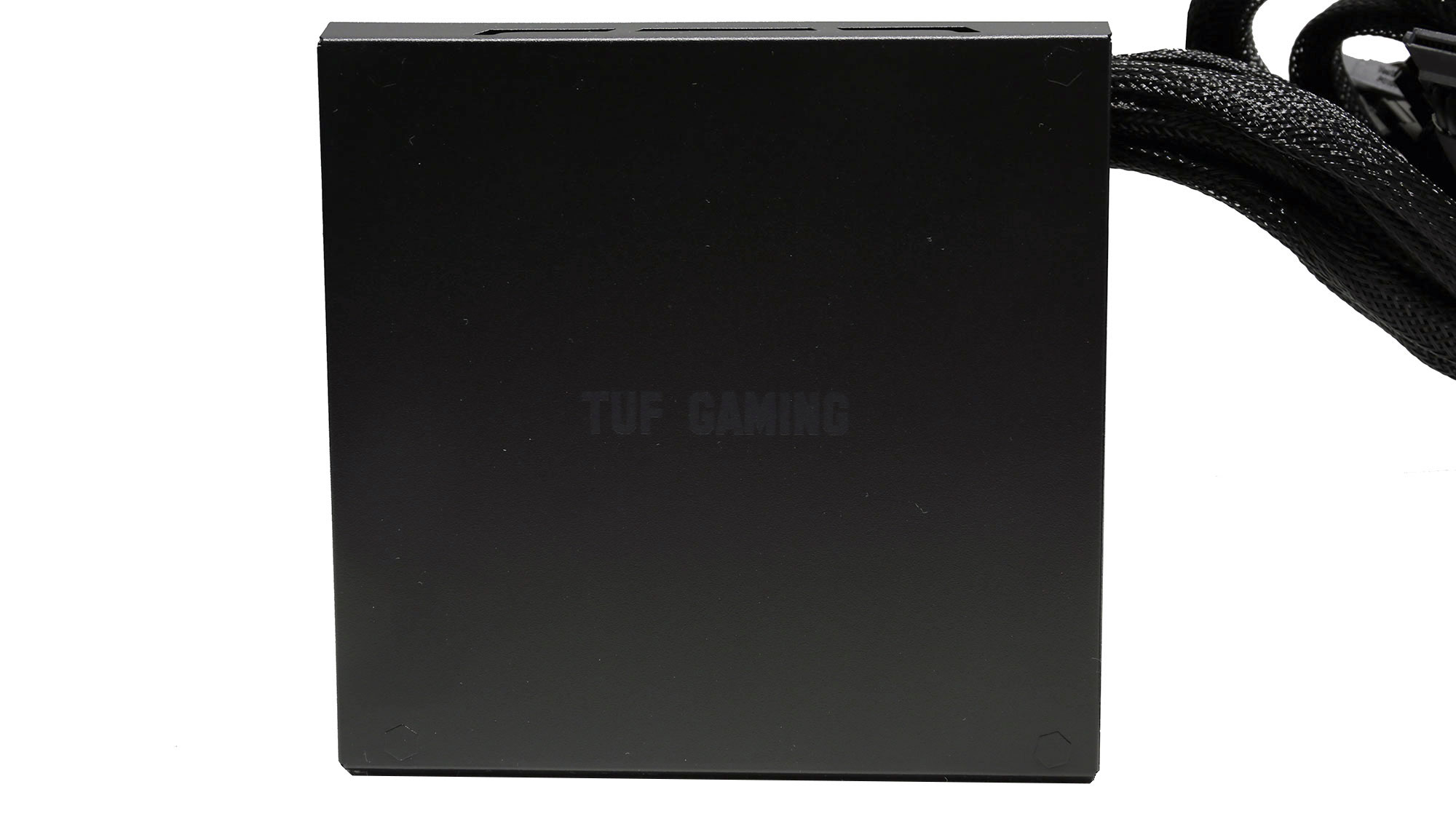
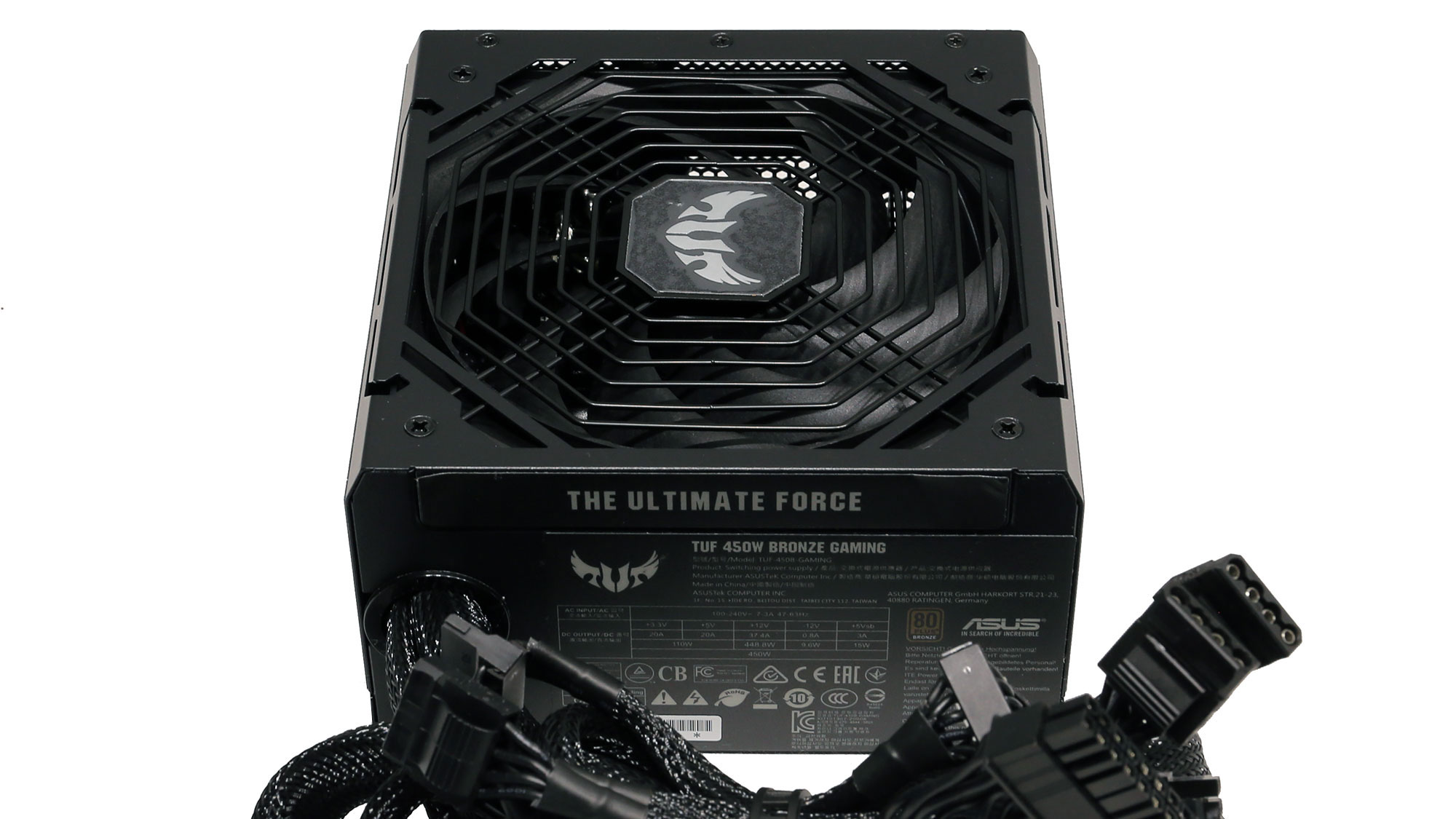
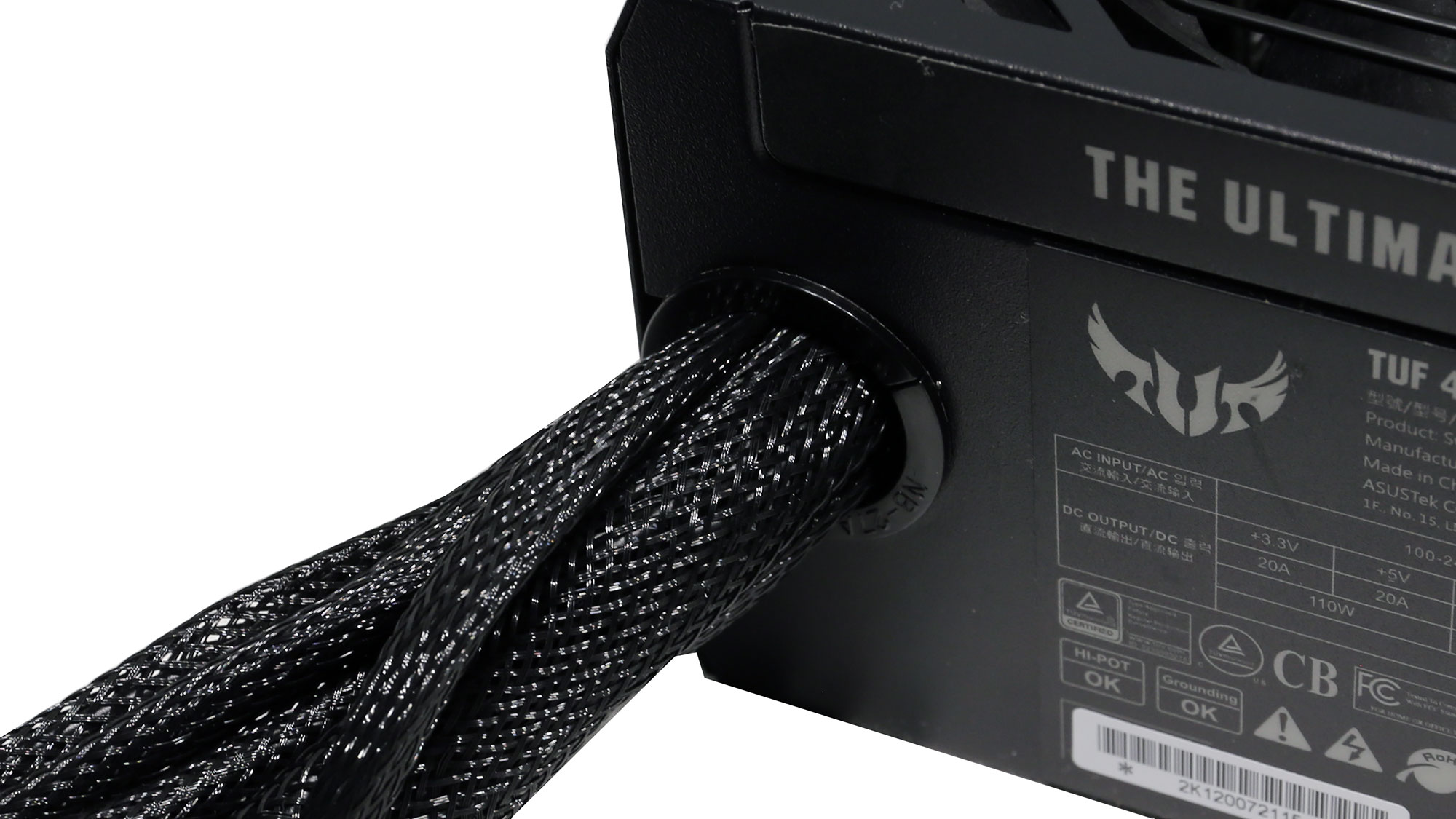

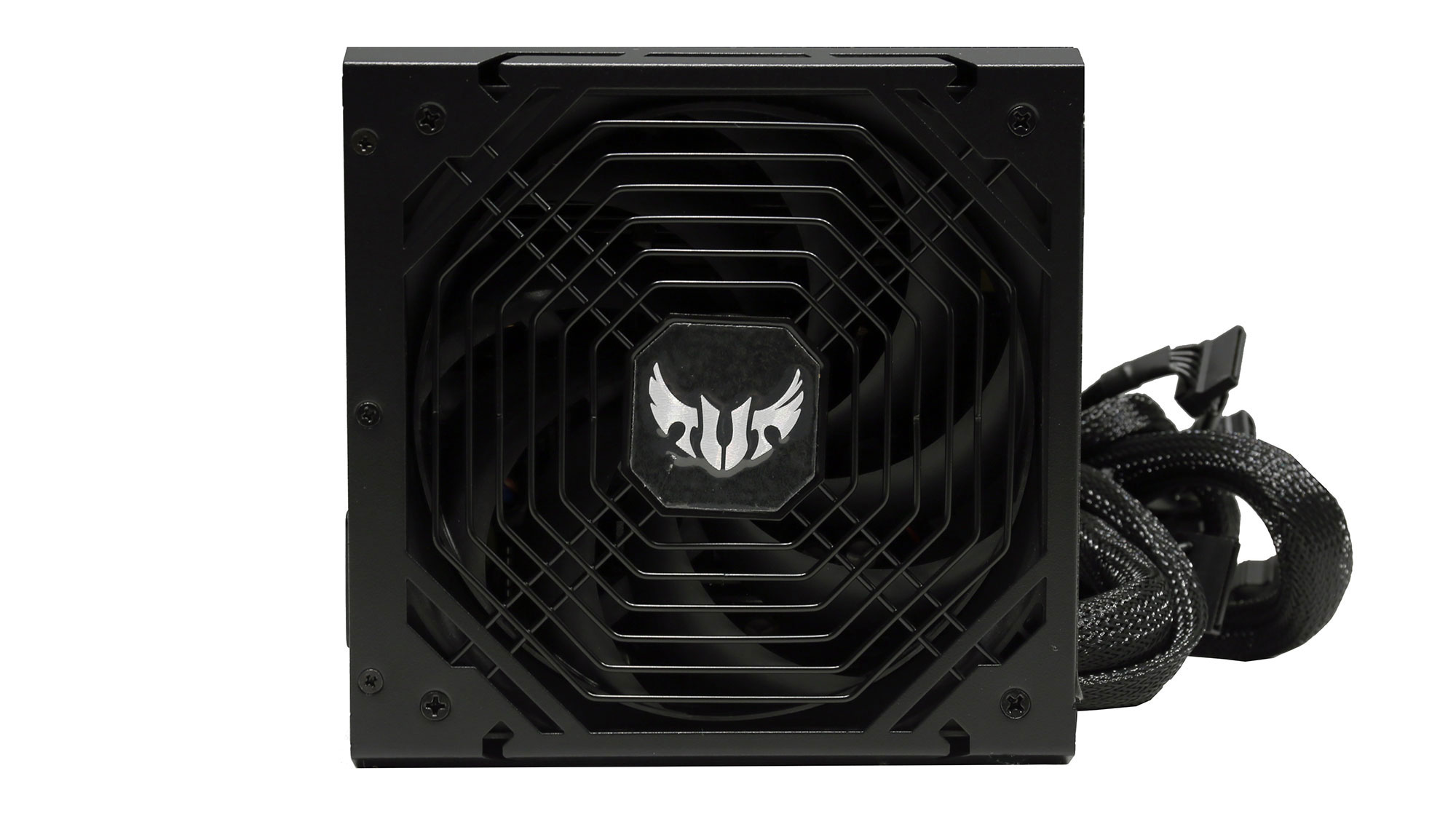
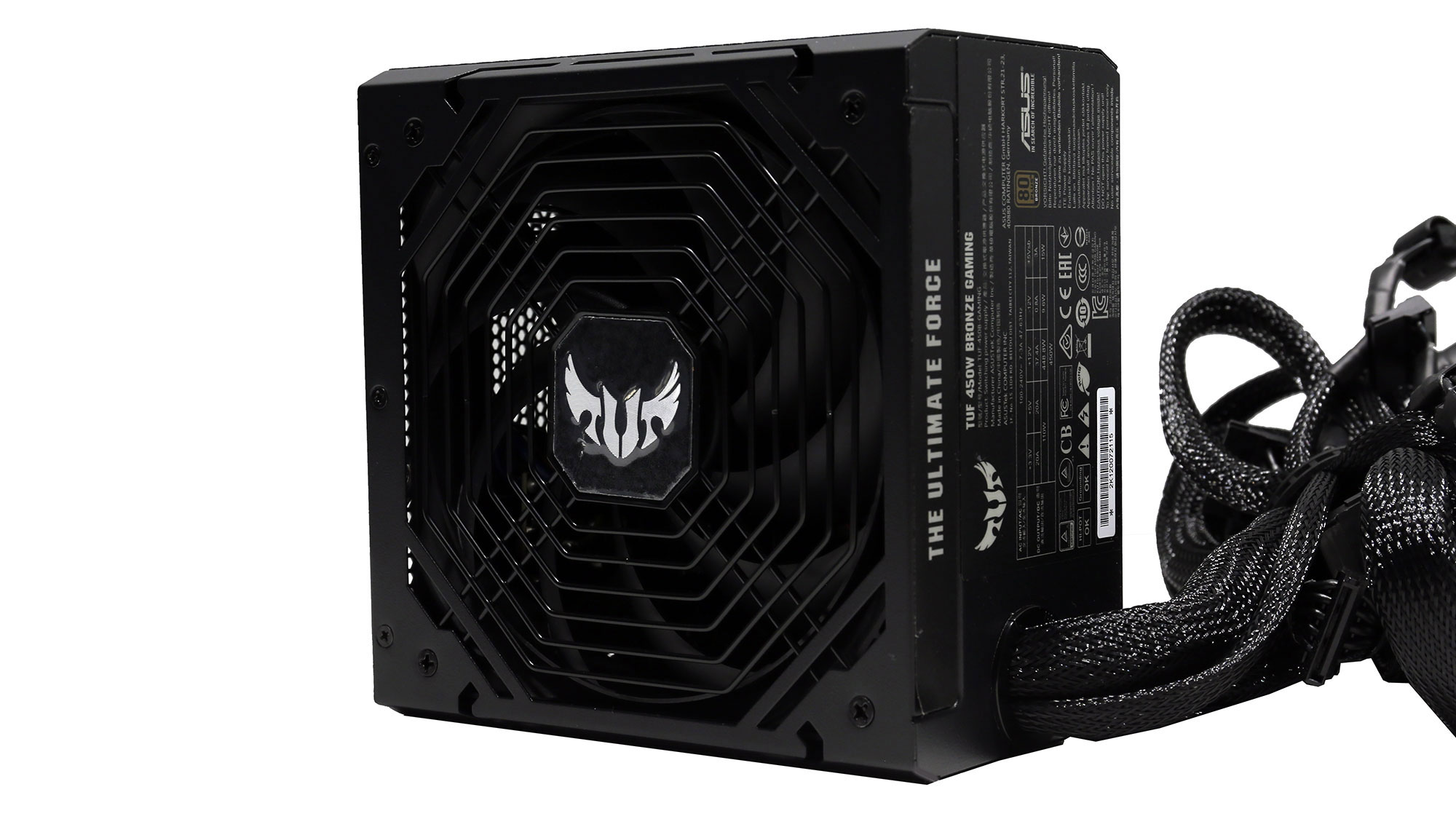
Similar to the TUF 550, the TUF 450 is 80 PLUS Bronze and Cybenetics Silver certified in efficiency. In noise, it received a Cybenetics A- rating, which is satisfactory for a low-capacity PSU. Lastly, the TUF 450 has a compact enough footprint with 150mm depth, allowing the installation of a 135mm fan. Given the unit's low capacity, the chassis could be smaller, but this wouldn't allow for a larger than 120mm fan, impacting noise output.
Specifications of Asus TUF Gaming 450W
| Manufacturer (OEM) | Great Wall |
| Max. DC Output | 450W |
| Efficiency | 80 PLUS Bronze, Cybenetics Silver (85-87%) |
| Noise | Cybenetics A- (25-30 dB[A]) |
| Modular | ✗ (fixed) |
| Intel C6/C7 Power State Support | ✓ |
| Operating Temperature (Continuous Full Load) | 0 - 40°C |
| Over Voltage Protection | ✓ |
| Under Voltage Protection | ✓ |
| Over Power Protection | ✓ |
| Over Current (+12V) Protection | ✓ |
| Over Temperature Protection | ✓ |
| Short Circuit Protection | ✓ |
| Surge Protection | ✓ |
| Inrush Current Protection | ✓ |
| Fan Failure Protection | ✗ |
| No Load Operation | ✓ |
| Cooling | 135mm Double Ball-Bearing Fan (CF1325H12D) |
| Semi-Passive Operation | ✓ |
| Dimensions (W x H x D) | 150 x 85 x 150mm |
| Weight | 1.91 kg (4.21 lb) |
| Form Factor | ATX12V v2.53, EPS 2.92 |
| Alternative Low Power Mode (ALPM) compatible | ✓ |
| Warranty | 6 Years |
Power Specifications of Asus TUF Gaming 450W
| Rail | Row 0 - Cell 1 | 3.3V | 5V | 12V | 5VSB | -12V |
| Max. Power | Amps | 20 | 20 | 37.4 | 3 | 0.8 |
| Row 2 - Cell 0 | Watts | Row 2 - Cell 2 | 110 | 448.8 | 15 | 9.6 |
| Total Max. Power (W) | Row 3 - Cell 1 | Row 3 - Cell 2 | 450 | Row 3 - Cell 4 | Row 3 - Cell 5 | Row 3 - Cell 6 |
Cables and Connectors for Asus TUF Gaming 450W
| Captive Cables | Row 0 - Cell 1 | Row 0 - Cell 2 | Row 0 - Cell 3 | Row 0 - Cell 4 |
| Description | Cable Count | Connector Count (Total) | Gauge | In Cable Capacitors |
| ATX connector 20+4 pin (600mm) | 1 | 1 | 18-20AWG | No |
| 4+4 pin EPS12V (820mm) | 1 | 1 | 18AWG | No |
| 6+2 pin PCIe (620mm+100mm) | 1 | 2 | 18AWG | No |
| SATA (420mm+110mm+110mm) | 1 | 3 | 18AWG | No |
| SATA (410mm+110mm) | 1 | 2 | 18AWG | No |
| 4-pin Molex (400mm+150mm+150mm+150mm) | 1 | 4 | 18AWG | No |
| Modular Cables | Row 8 - Cell 1 | Row 8 - Cell 2 | Row 8 - Cell 3 | Row 8 - Cell 4 |
| AC Power Cord (1390mm) - C13 coupler | 1 | 1 | 18AWG | - |
All cables are fixed. The good part is that they are long, especially the EPS cable. Moreover, the distance between the 4-pin Molex connectors is adequate at 150mm. Lastly, there are enough connectors for a 450W unit.
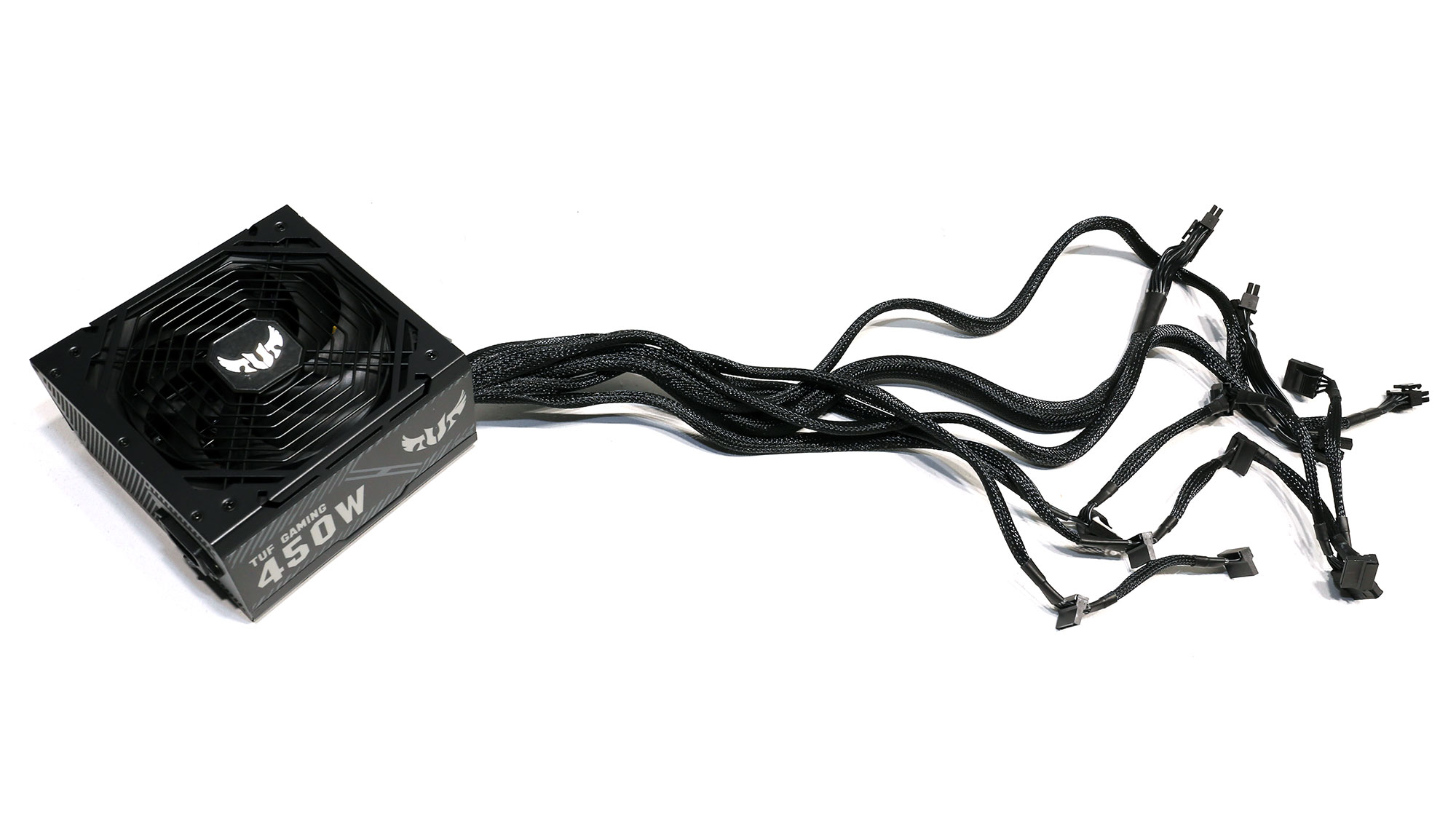
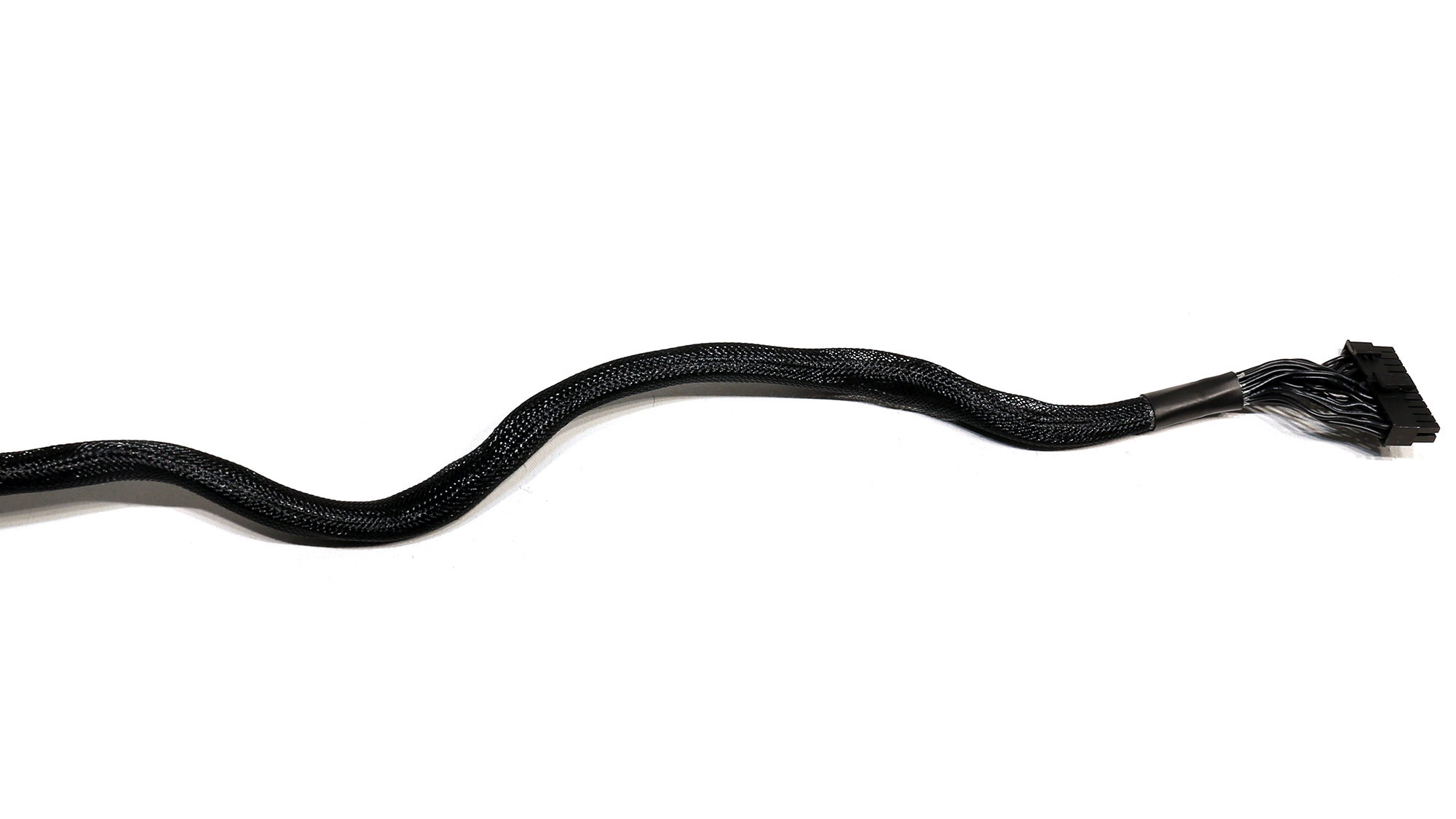
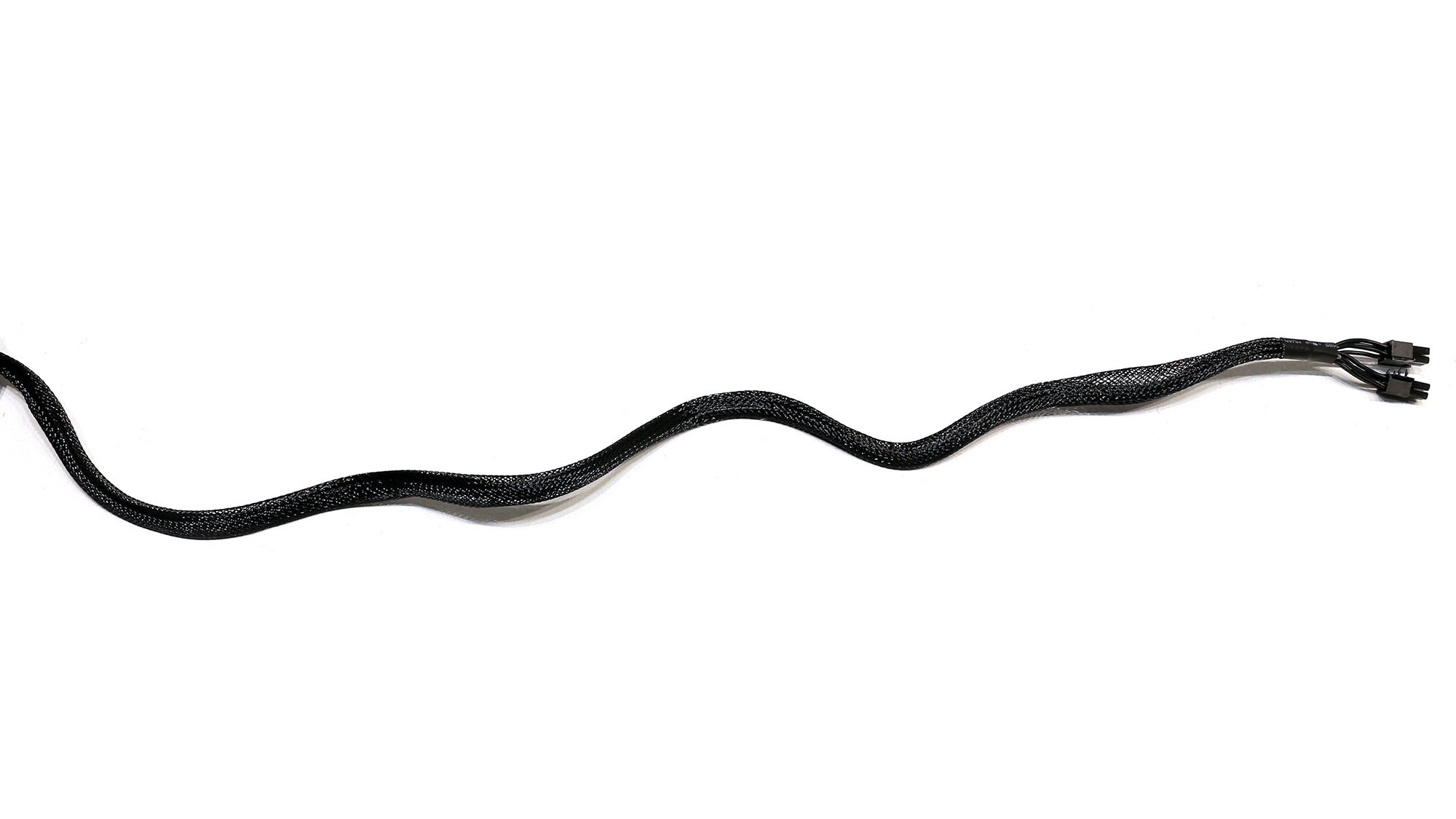
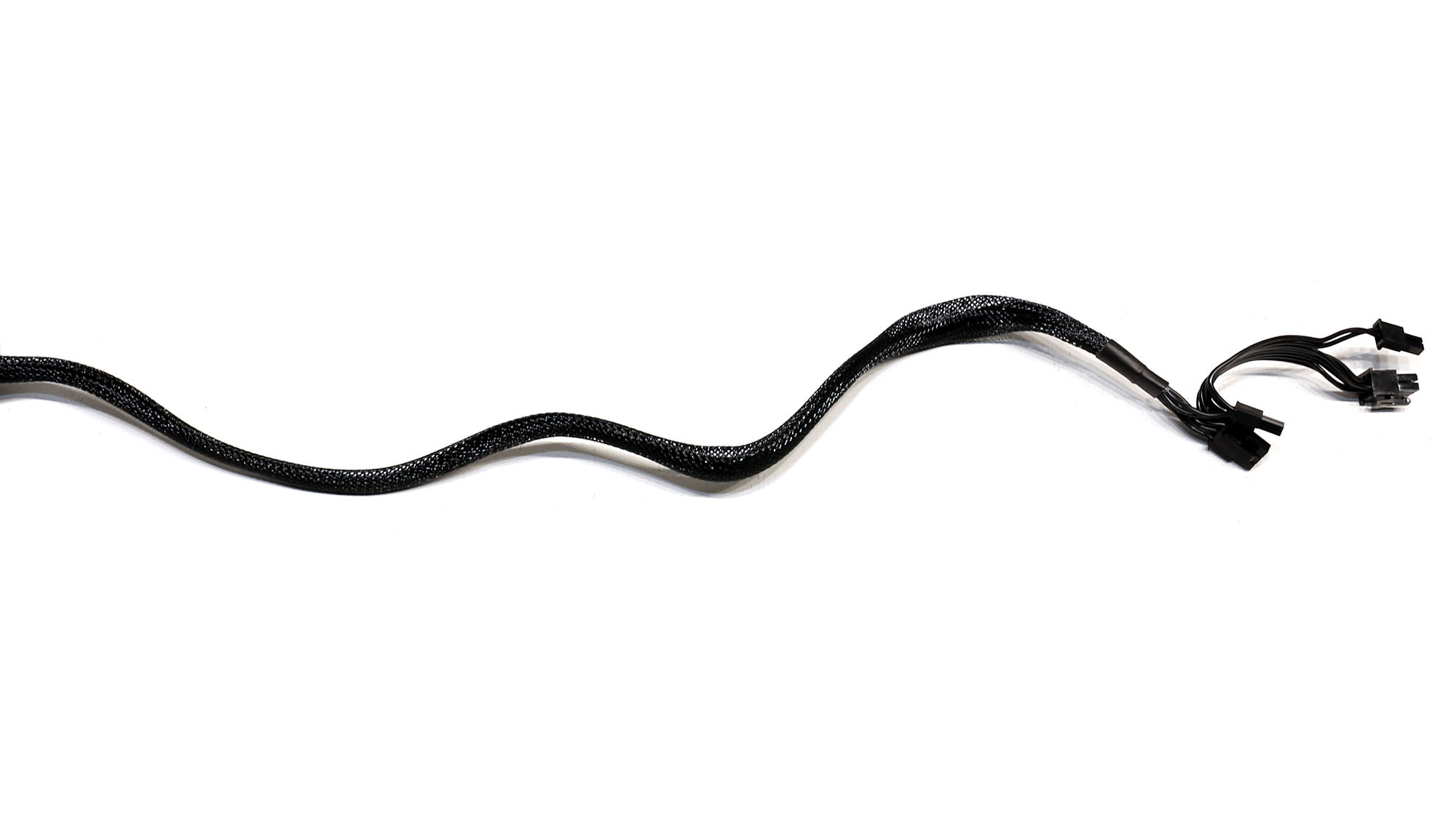
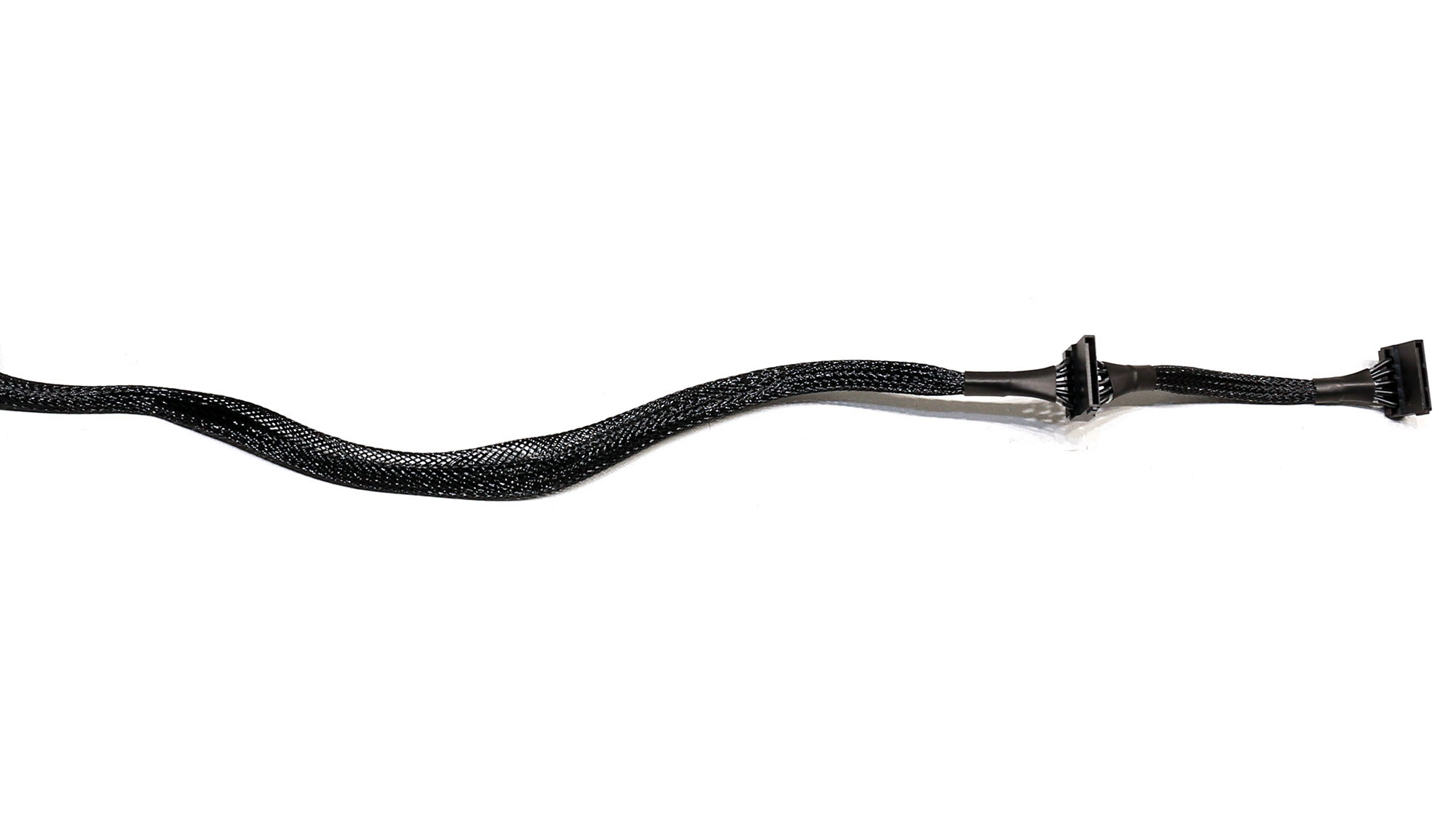
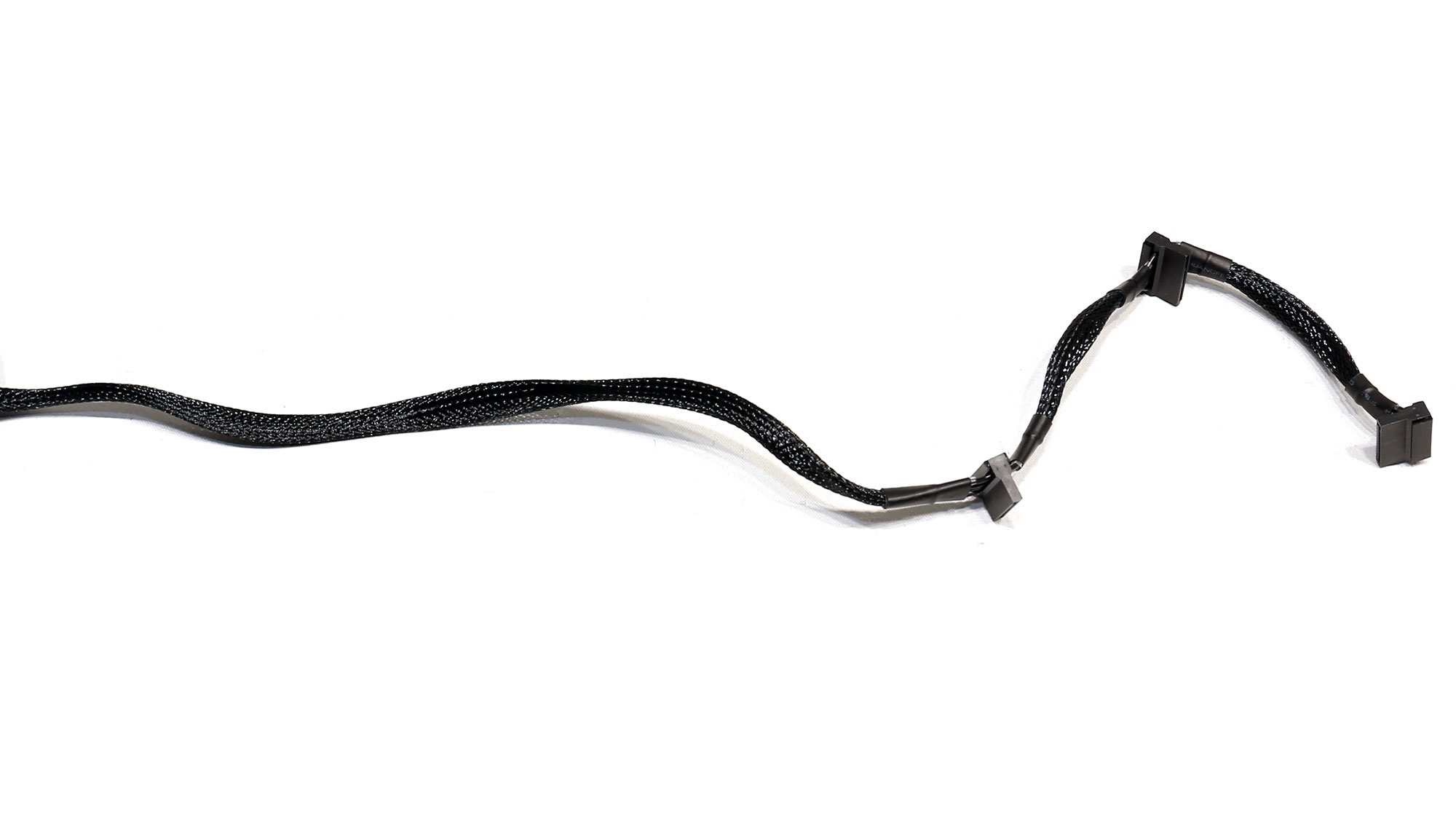
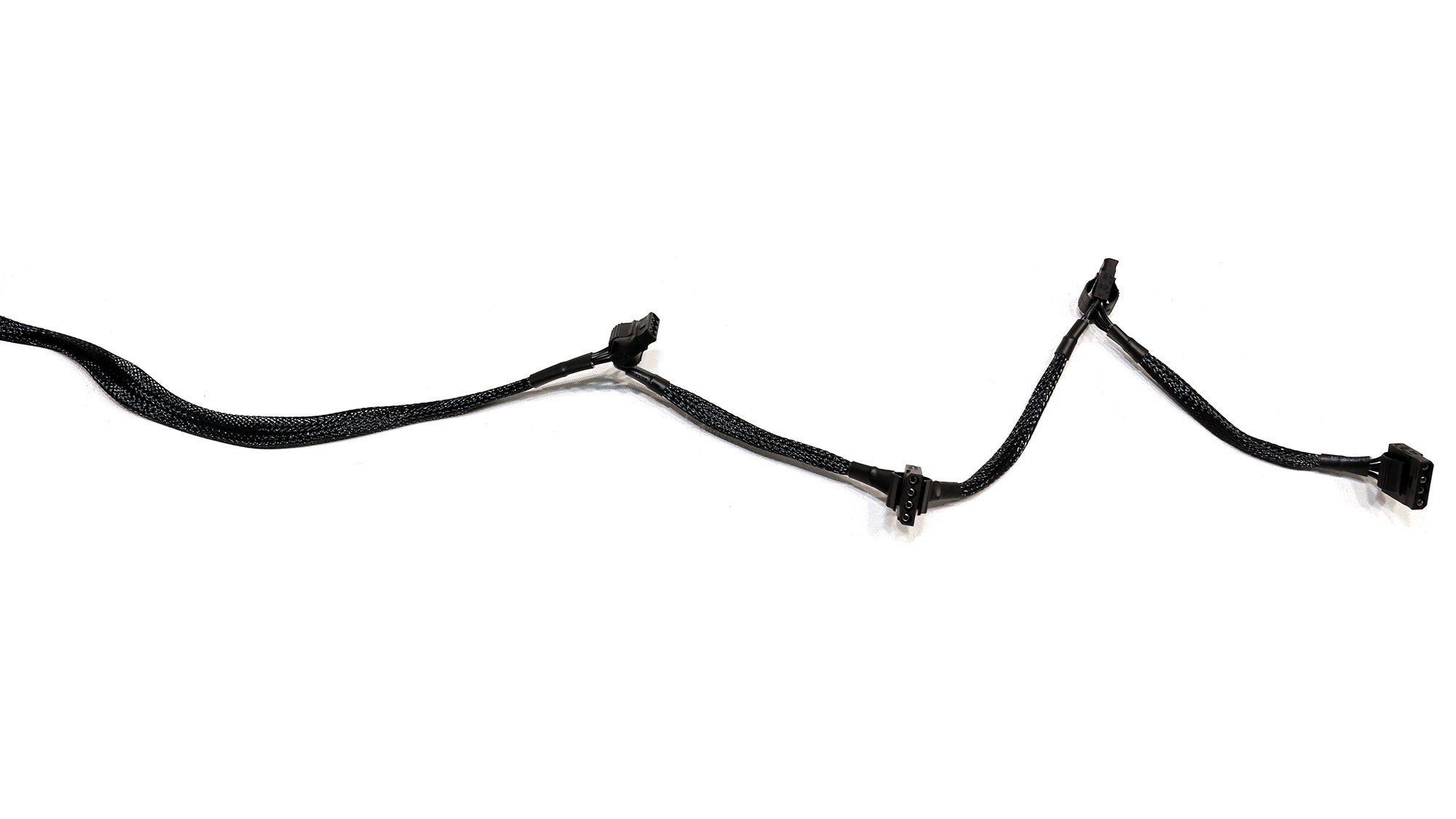
Component Analysis of Asus TUF Gaming 450W
We strongly encourage you to have a look at our PSUs 101 article, which provides valuable information about PSUs and their operation, allowing you to better understand the components we're about to discuss.
| General Data | - |
| Manufacturer (OEM) | Great Wall |
| PCB Type | Single Sided |
| Primary Side | - |
| Transient Filter | 4x Y caps, 2x X caps, 2x CM chokes, 1x MOV |
| Inrush Protection | NTC Thermistor SCK-1R58 (1.5 Ohm) |
| Bridge Rectifier(s) | 1x GBU1508 (800V, 15A @ 100°C) |
| APFC MOSFETs | 1x Advanced Power AP30SL60WL (650V, 16.5A @ 100°C, Rds(on): 0.13Ohm) |
| APFC Boost Diode | 1x STMicroelectronics STTH8S06FP (600V, 8A) |
| Bulk Cap(s) | 1x Lelon (450V, 270uF, 2,000h @ 105°C, LSG) |
| Main Switchers | 2x STMicroelectronics STF13NM60N (600V, 6.9A @ 100°C, Rds(on): 0.36Ohm) |
| APFC Controller | Champion CM6500UNX & CM03AX |
| Resonant Controller | Champion CM6901X |
| Topology |
Primary side: APFC, Half-Bridge & LLC converter Secondary side: Synchronous Rectification & DC-DC converters |
| Secondary Side | - |
| +12V MOSFETs | 2x STMicroelectronics STP100N6F7 (60V, 75A @ 100°C, Rds(on): 5.6mOhm) |
| 5V & 3.3V | DC-DC Converters |
| Filtering Capacitors |
Electrolytic: 3x Elite (3-5,000h @ 105°C, EJ), 3x Teapo (1-3,000h @ 105°C, SC), 1x Teapo (1-2,000h @ 105°C, SZ), 1x Teapo (105°C, TB), 1x Teapo (105°C, TA) |
| Supervisor IC | IN1S429I - DCG |
| Fan Model | Champion CF1325H12D (135mm, 12V, 0.6A, Double Ball Bearing) |
| 5VSB Circuit | - |
| Rectifier | 1x SBR |
| Standby PWM Controller | Power Intergrations TNY278PN |

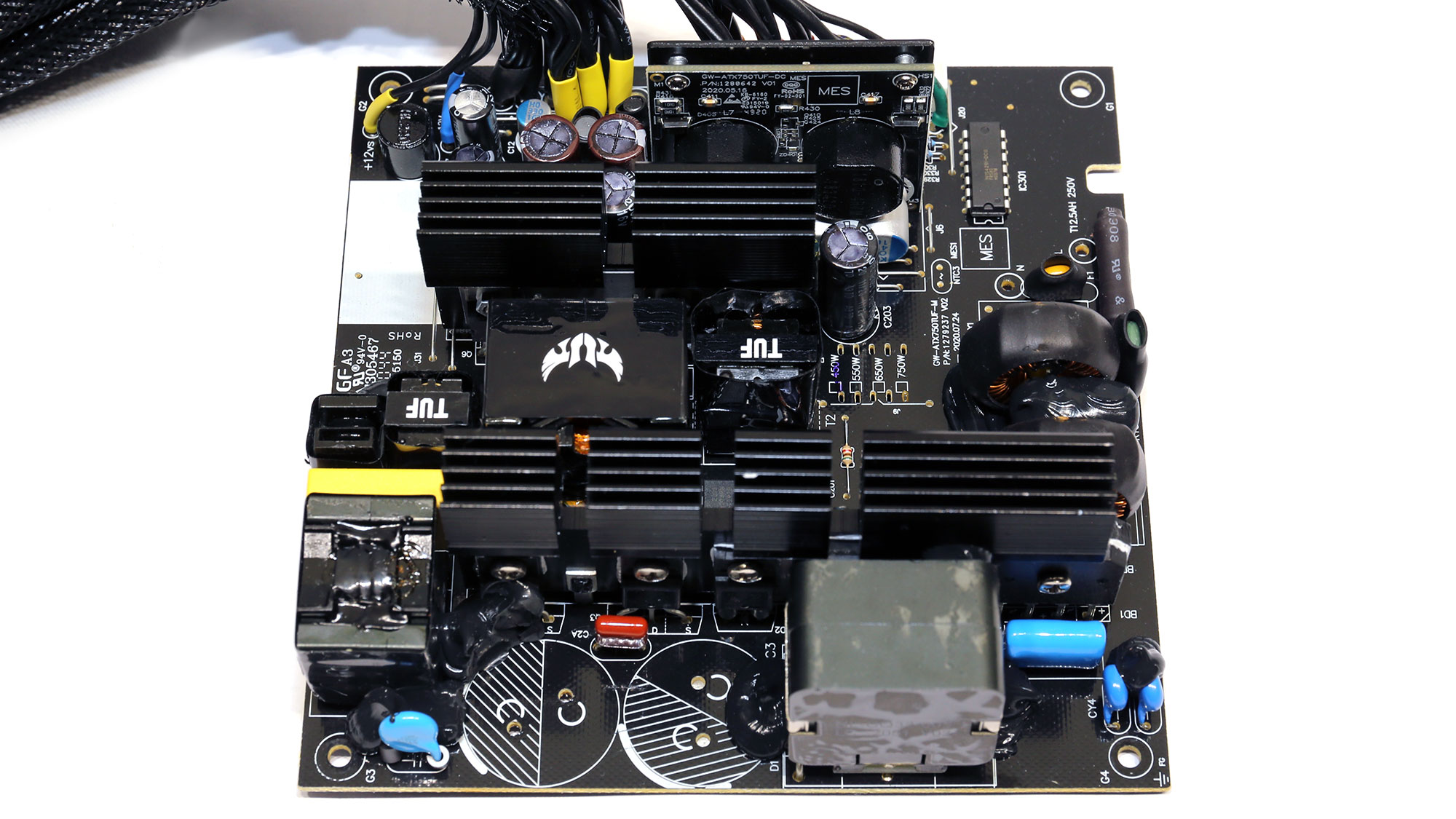
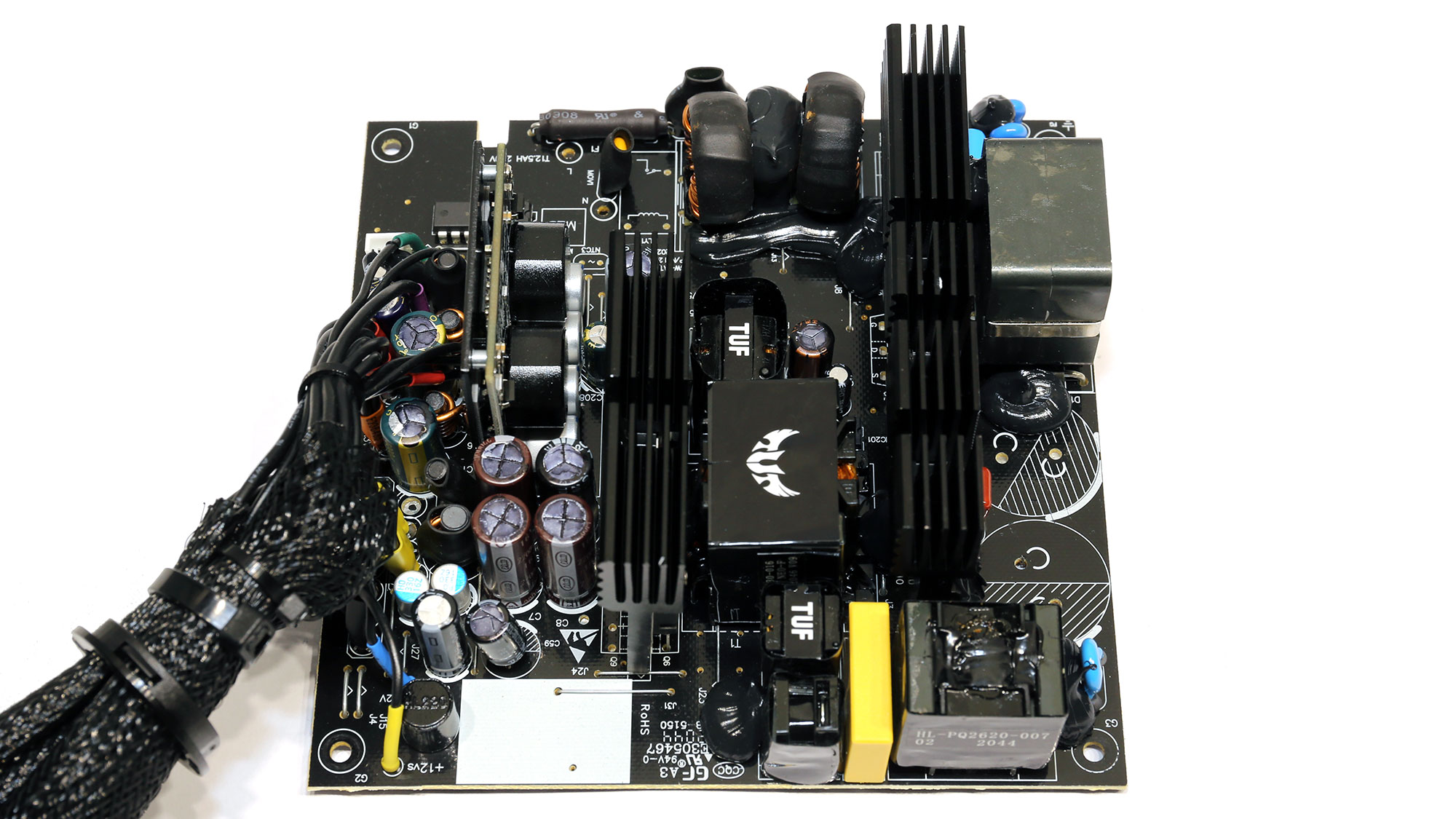
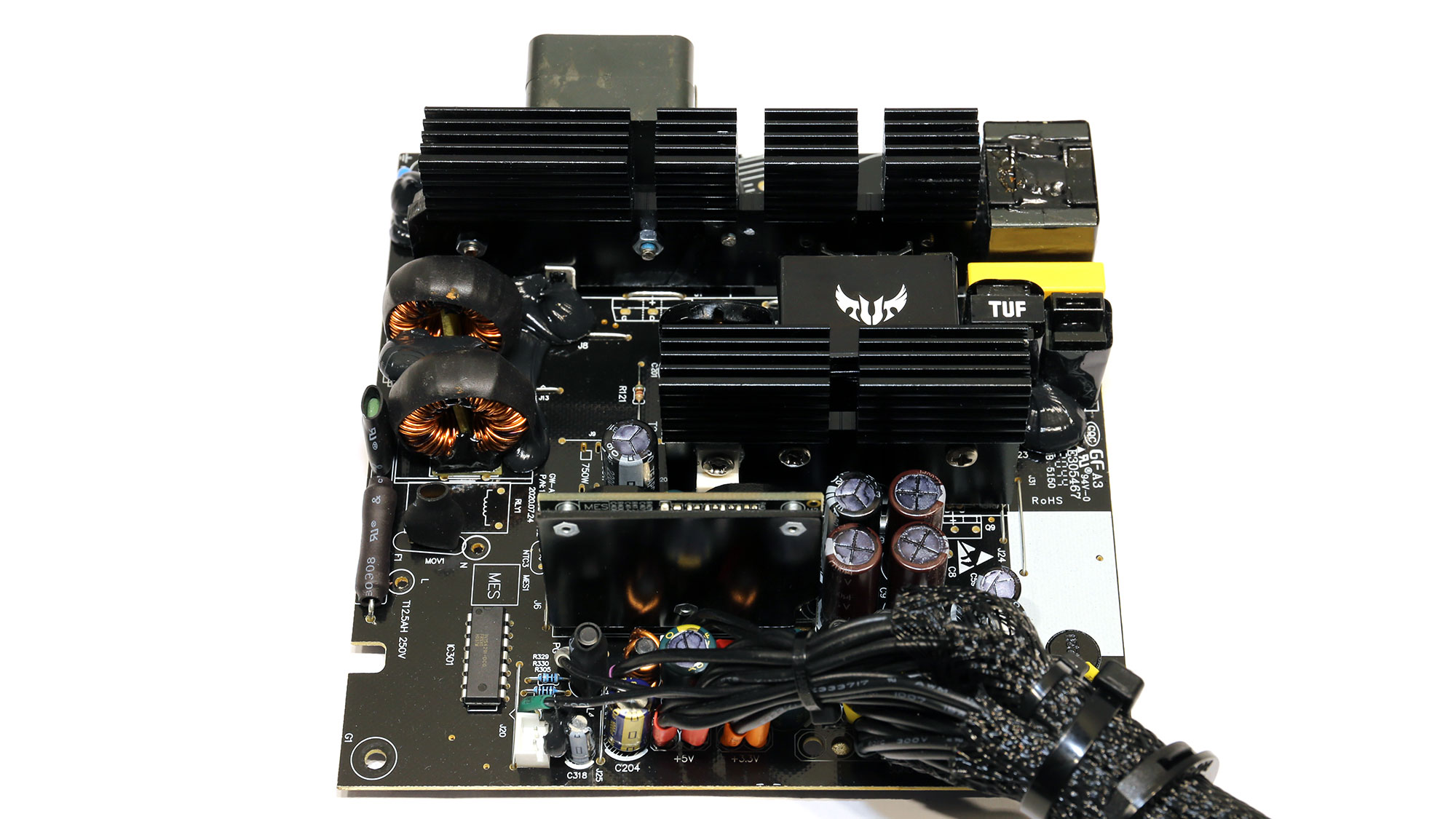
This platform is too advanced for a mere Bronze unit, which is why it is more expensive. Great Wall, the OEM behind the TUF line, used a half-bridge topology and an LLC resonant controller. A configuration usually found in Gold and higher efficiency units, up to Titanium in some cases. The soldering quality is great, and to keep the cost down, GW used Elite and Teapo caps, which are the best alternative to Japanese caps.
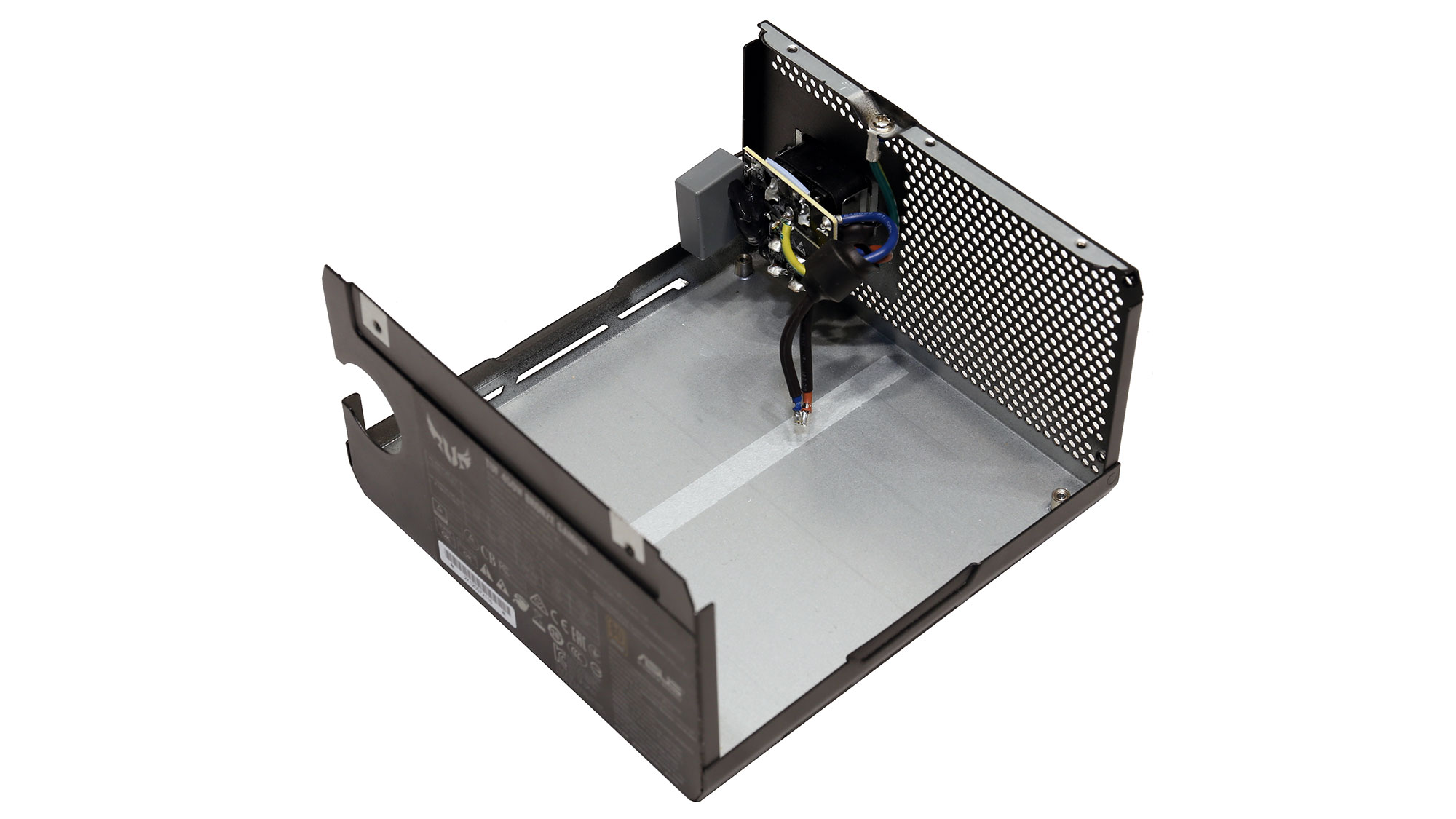
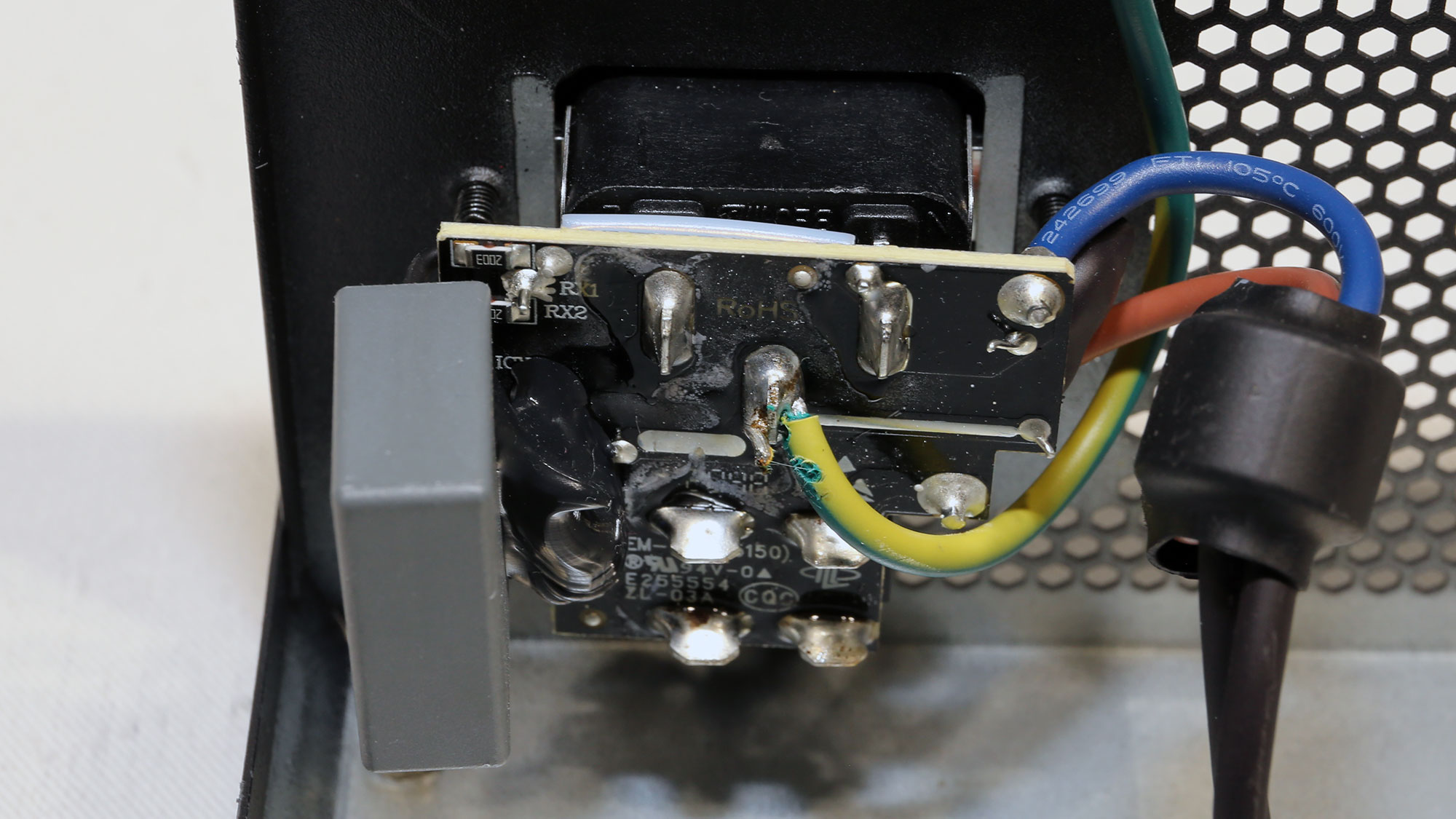
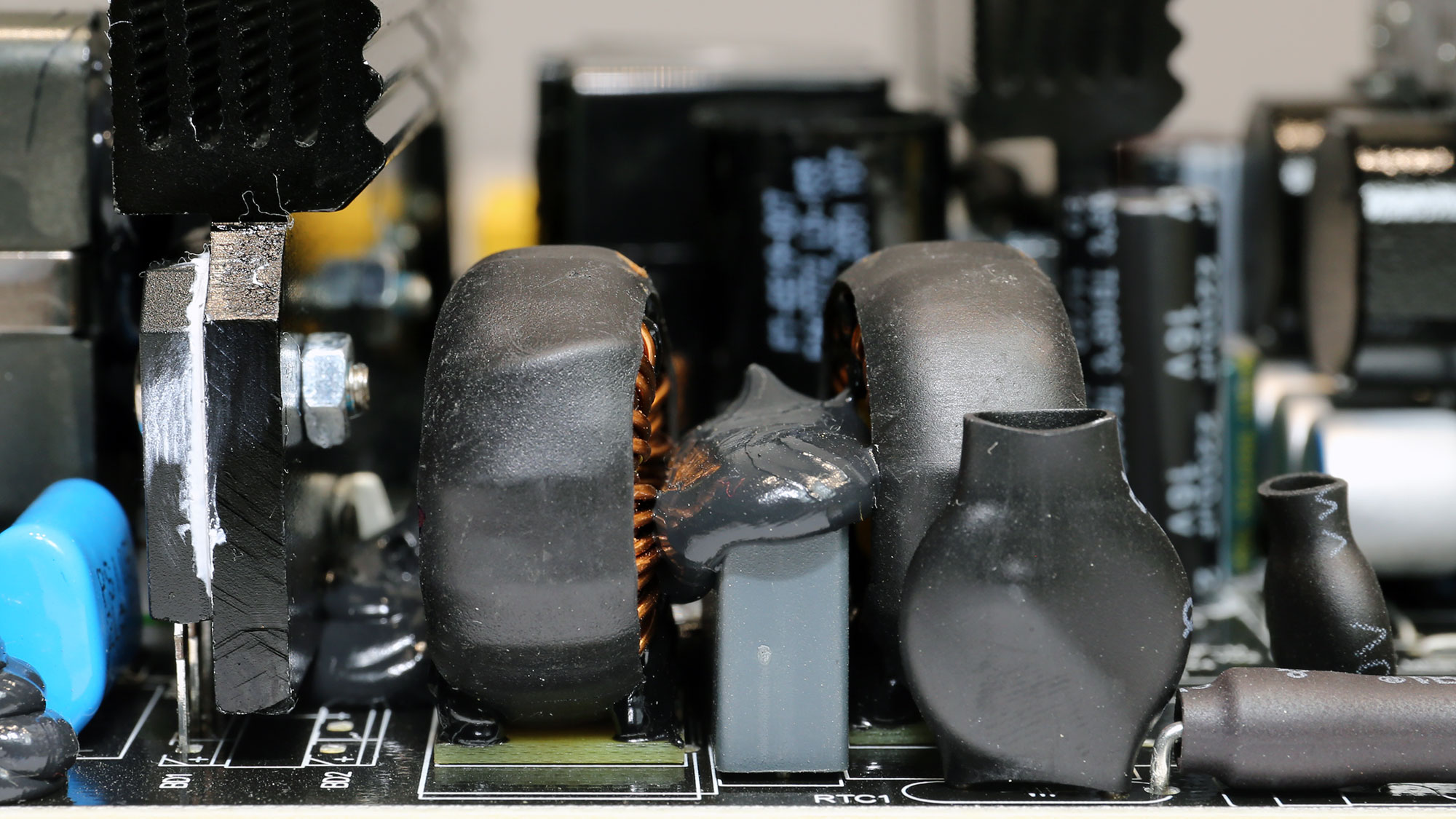
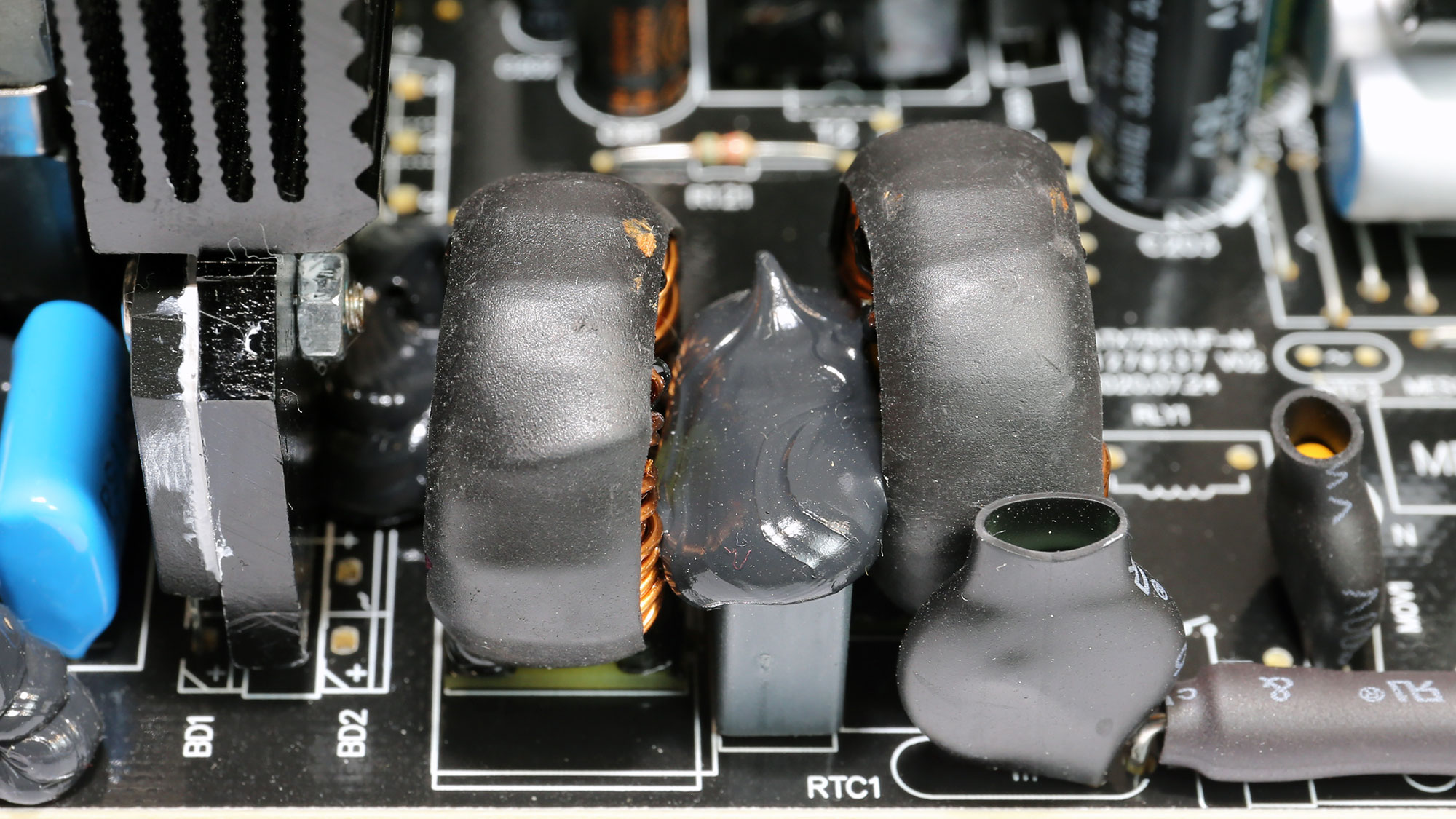
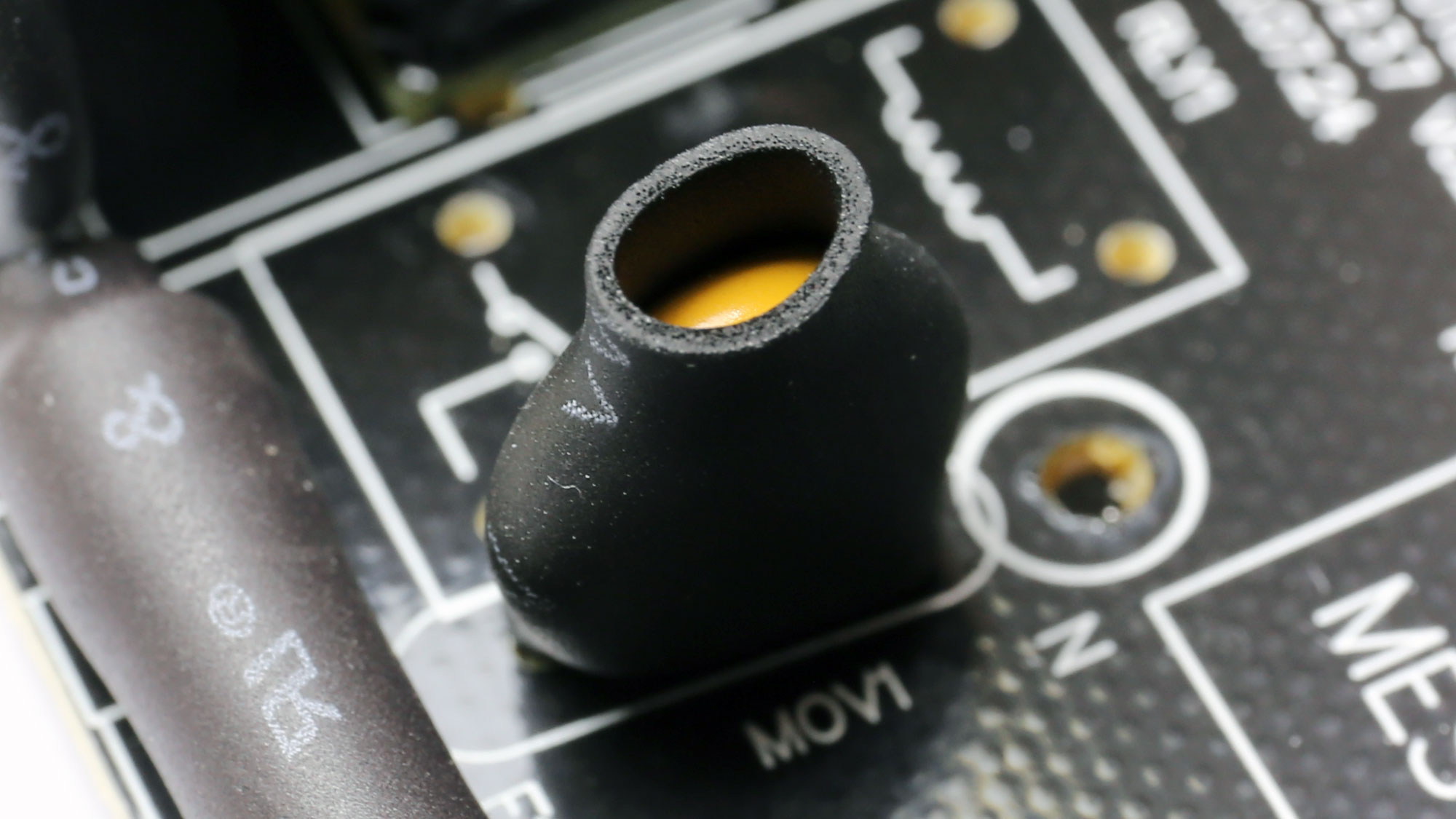
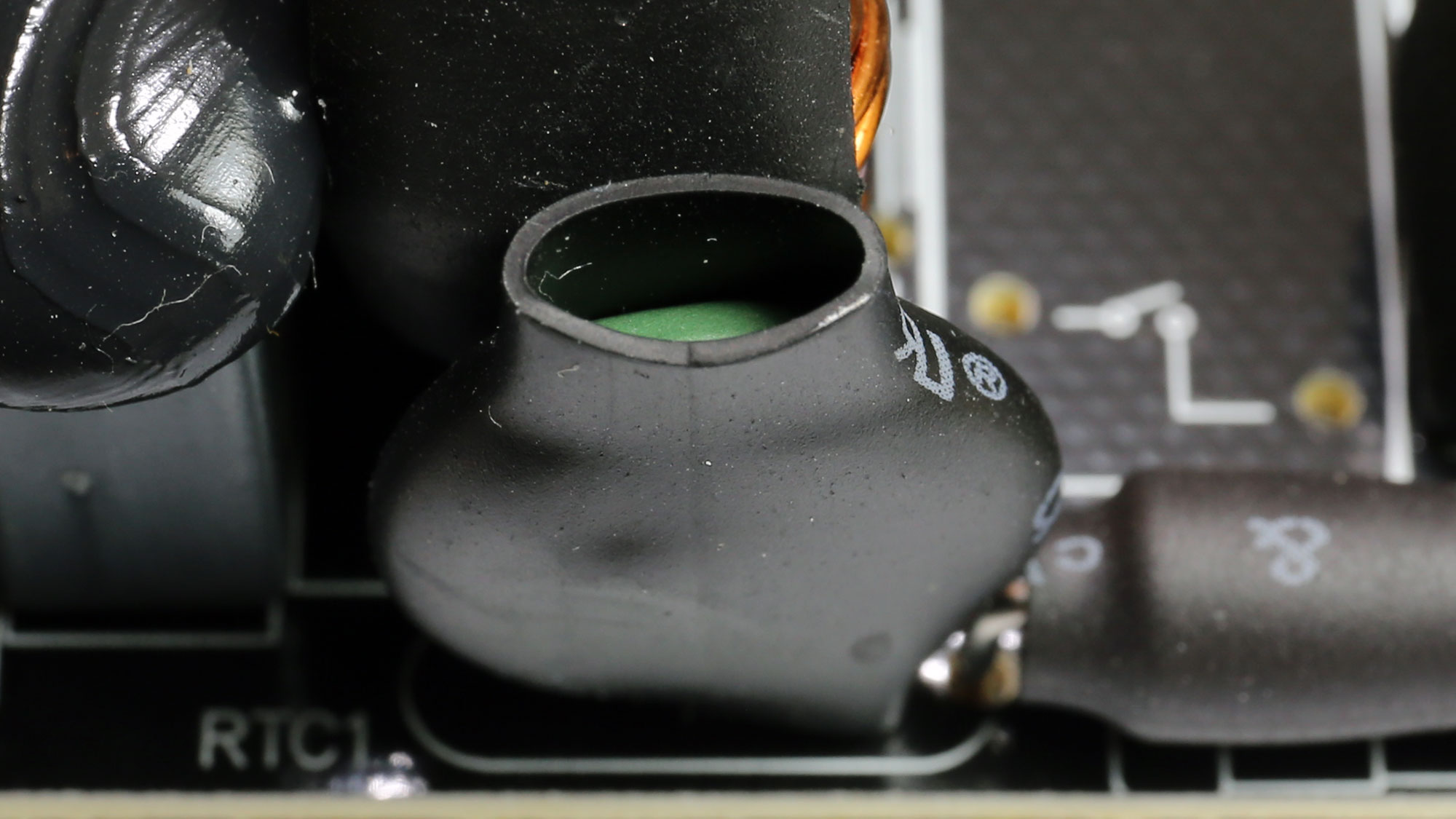
The transient/EMI filter has all require parts to get the job done.
Get Tom's Hardware's best news and in-depth reviews, straight to your inbox.
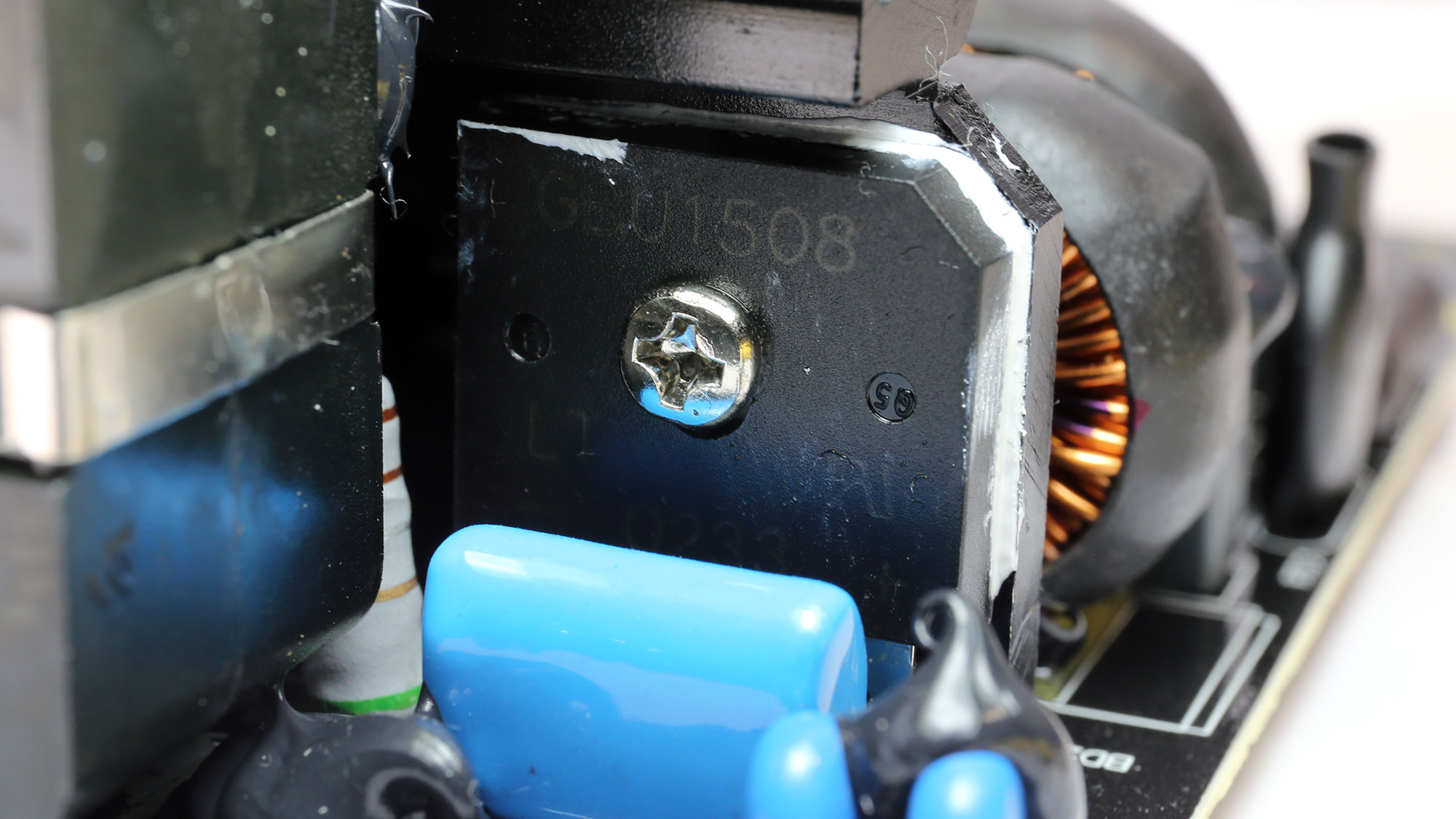
The single bridge rectifier can handle up to 15A at 100°C.
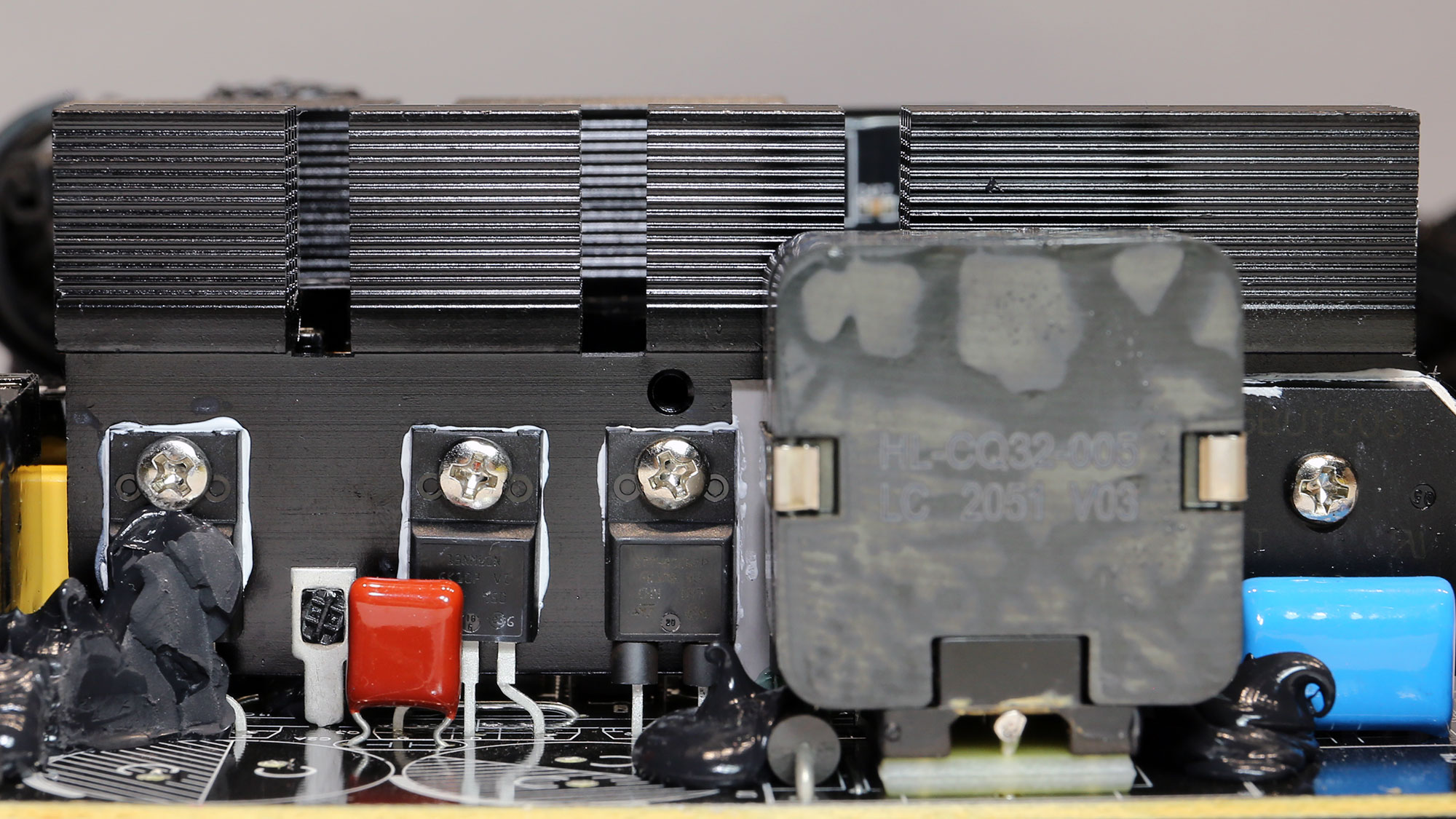
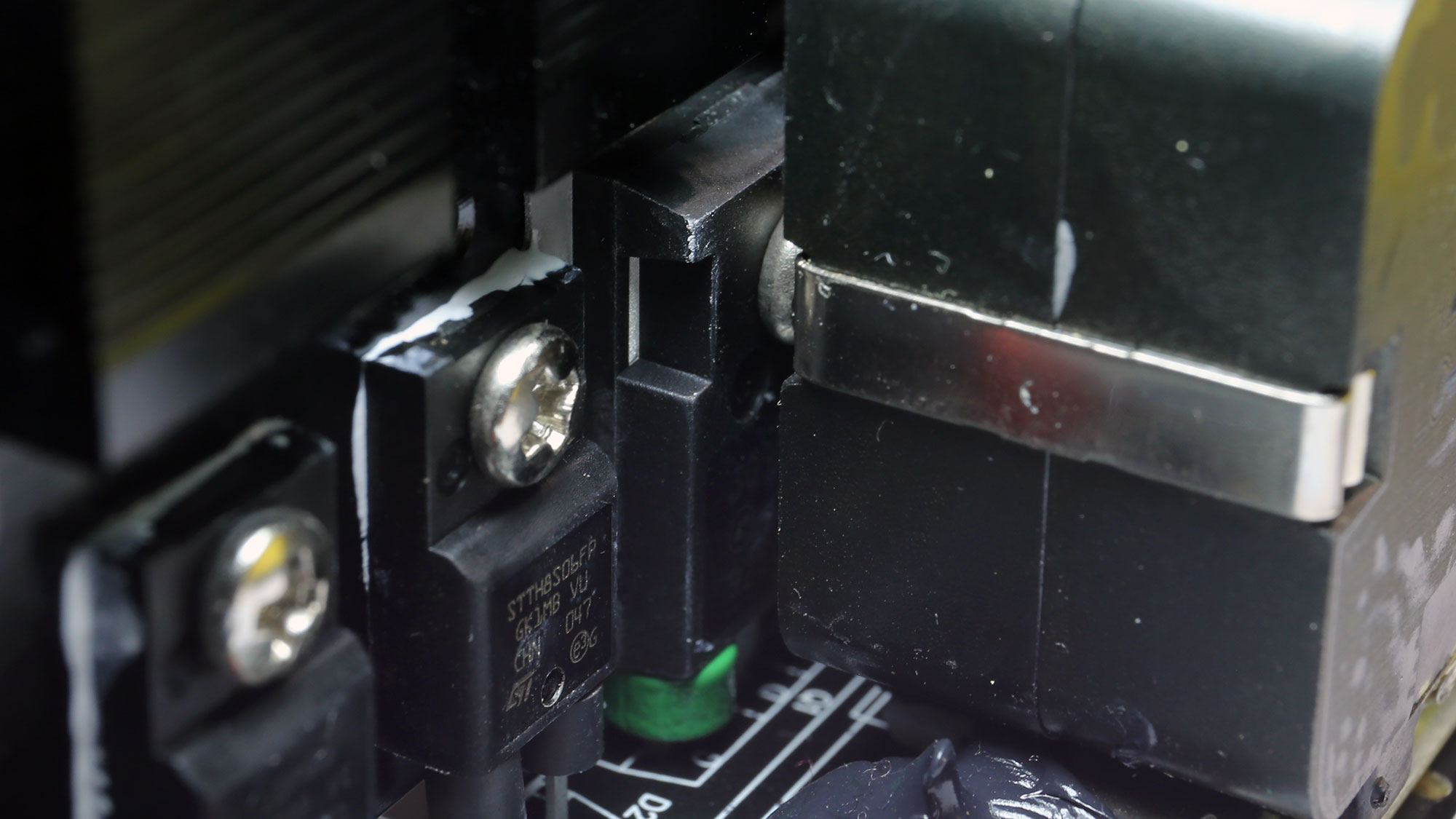
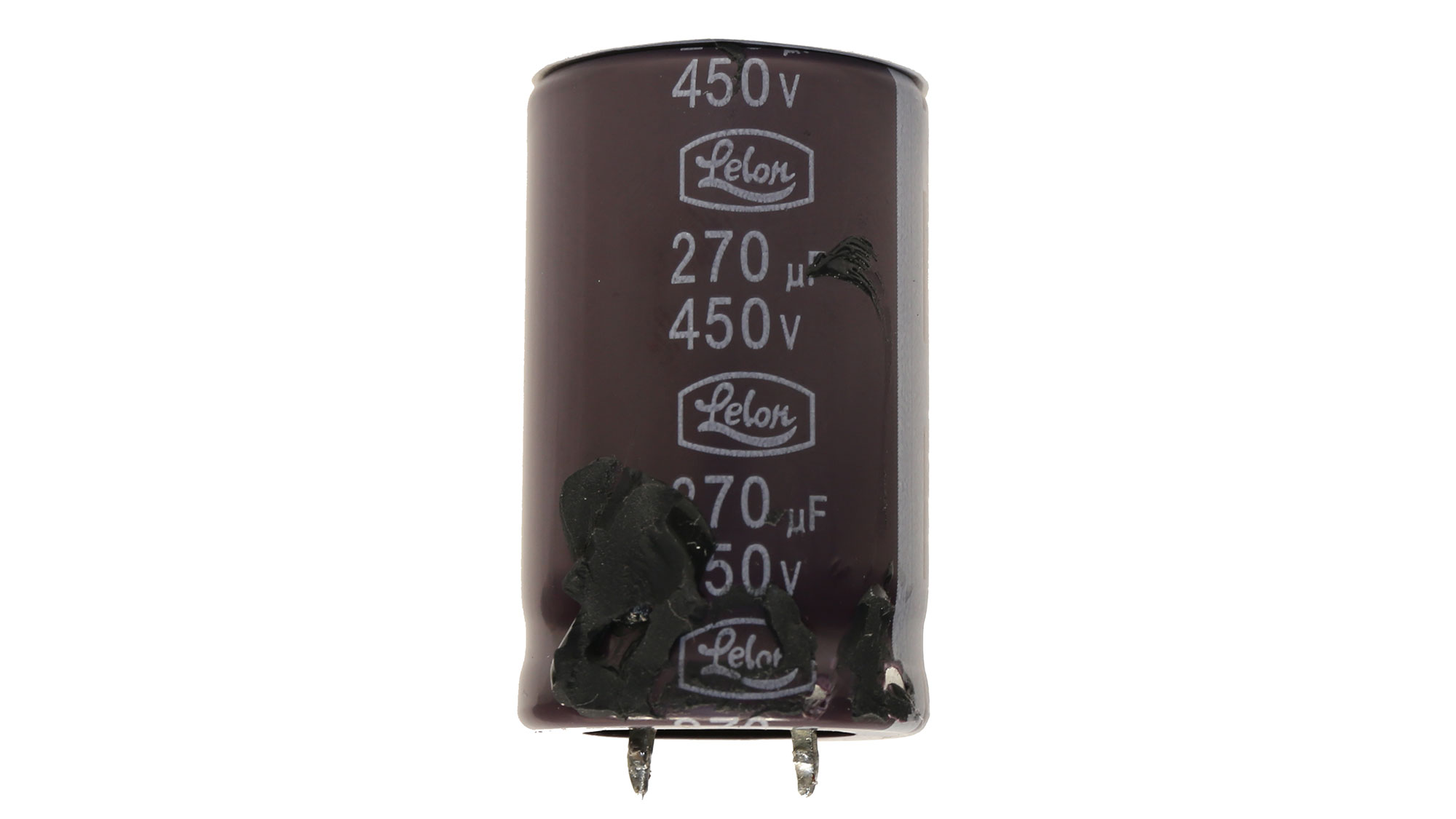
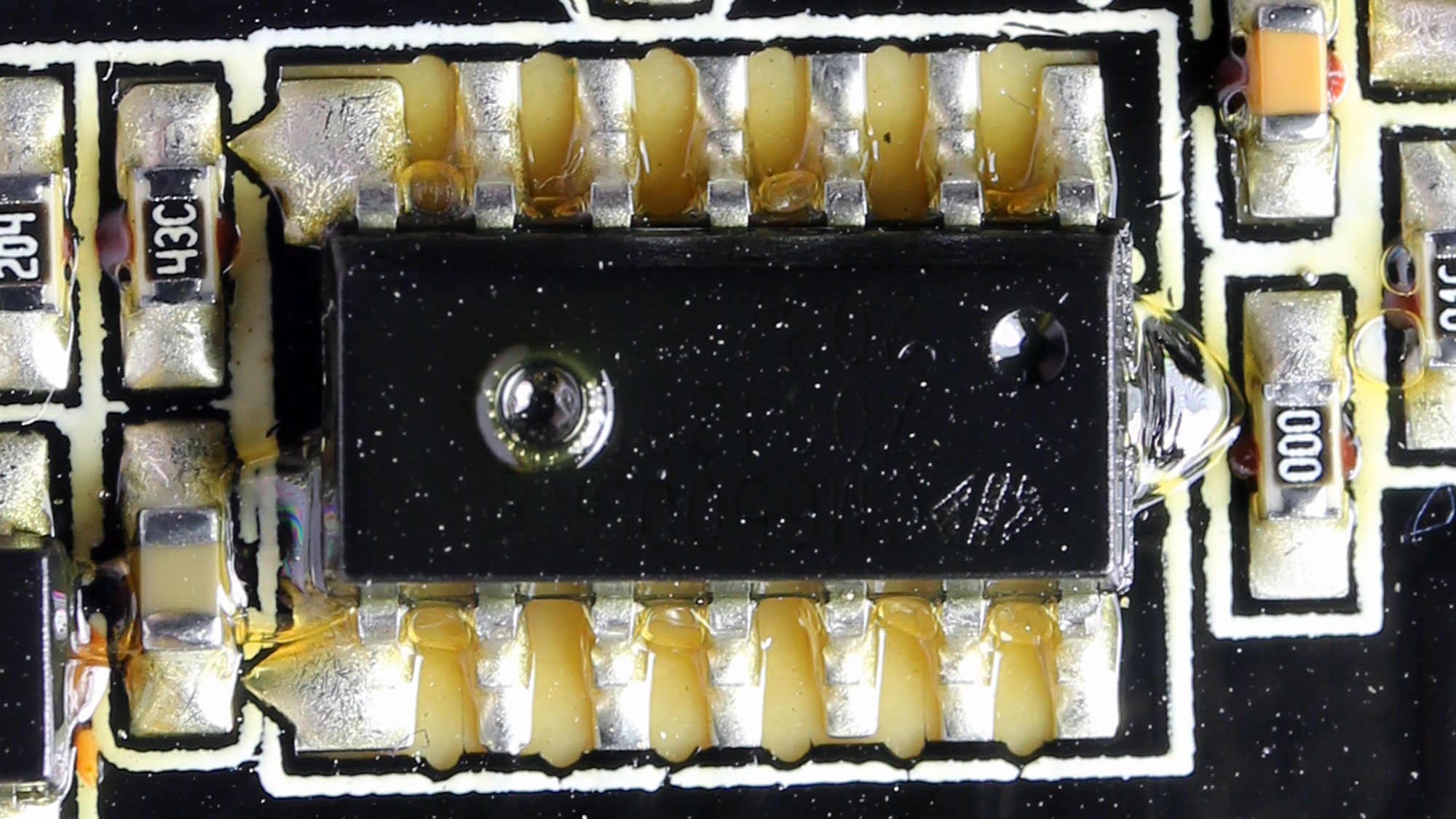
The APFC converter uses two FETs and a single boost diode. The bulk cap is rated at 450V and 105°C, but its capacity is low, and to add insult to injury, it is by Lelon, a brand that doesn't have a good name in this section.
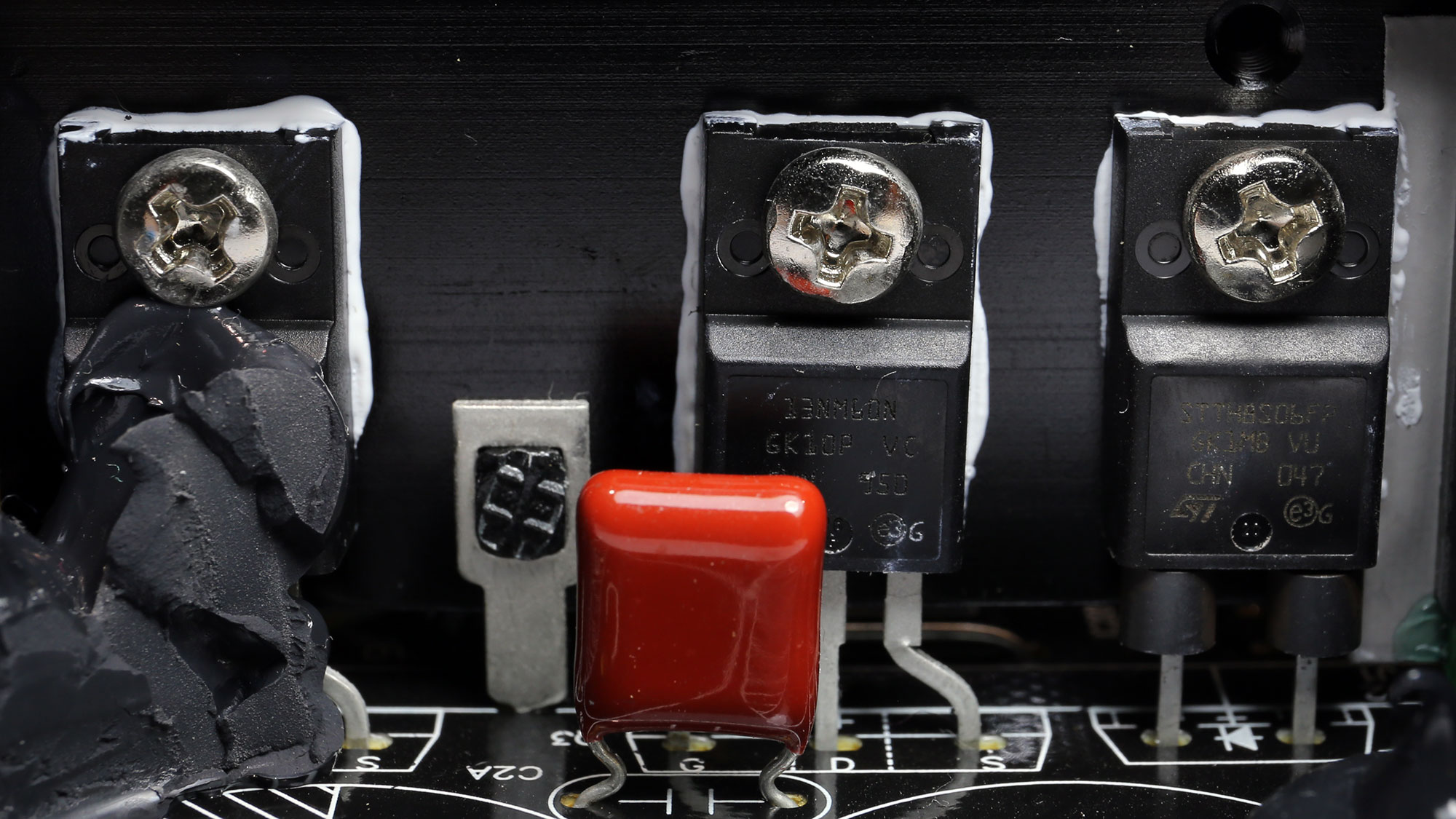
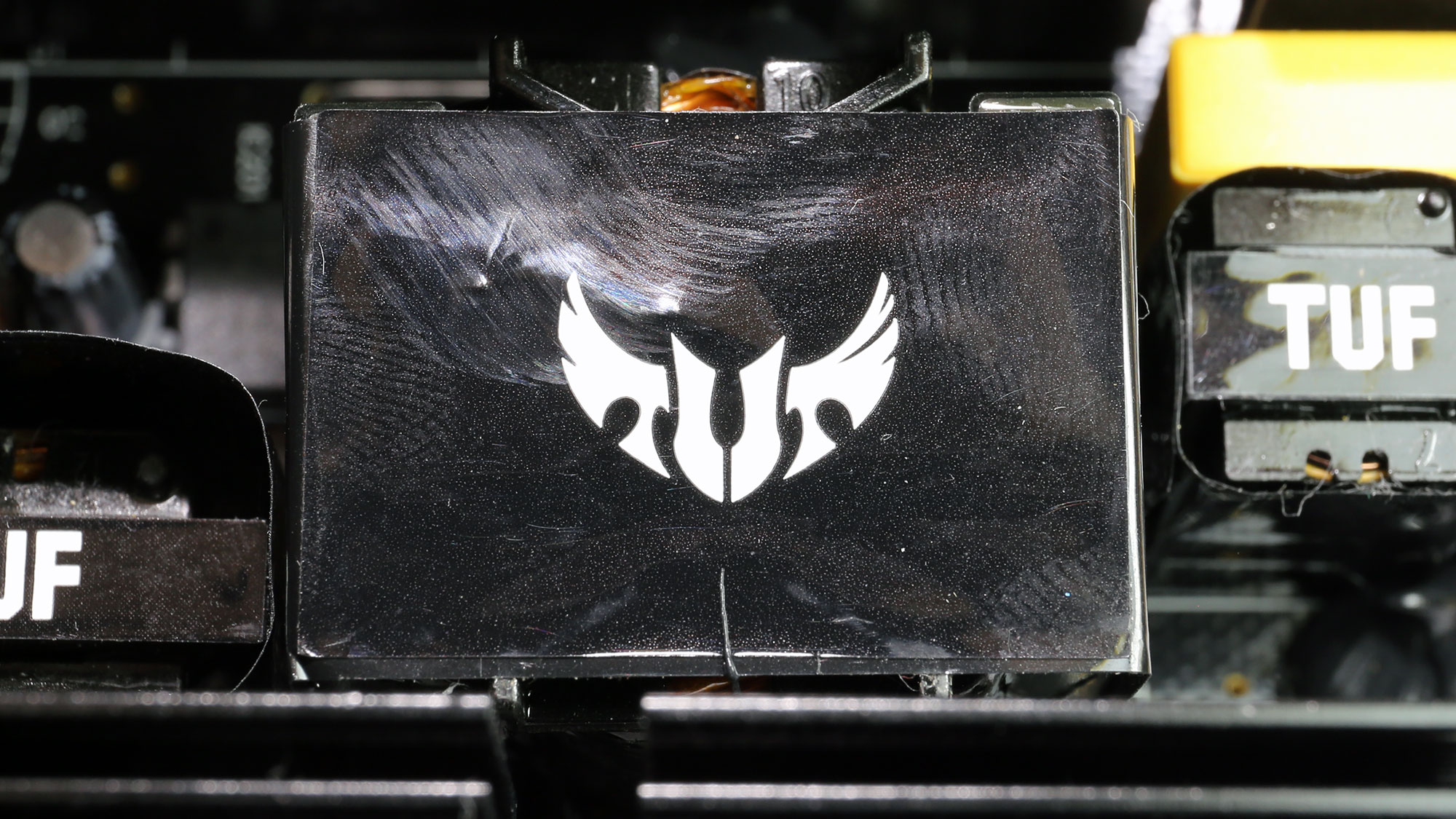
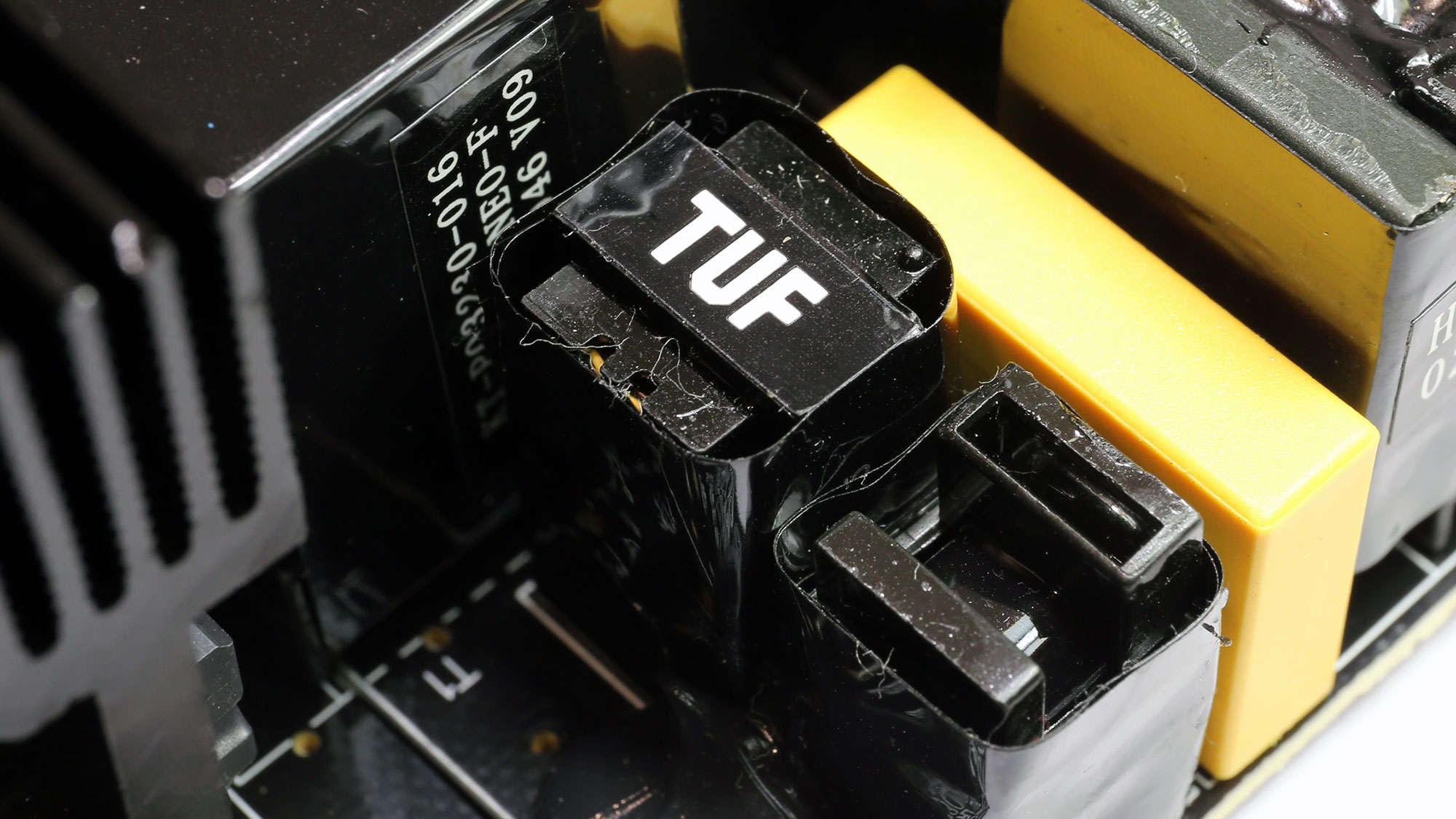

The primary switching FETs are two STMicroelectronics installed in a half-bridge topology. An LLC resonant converter is also used for increased efficiency.
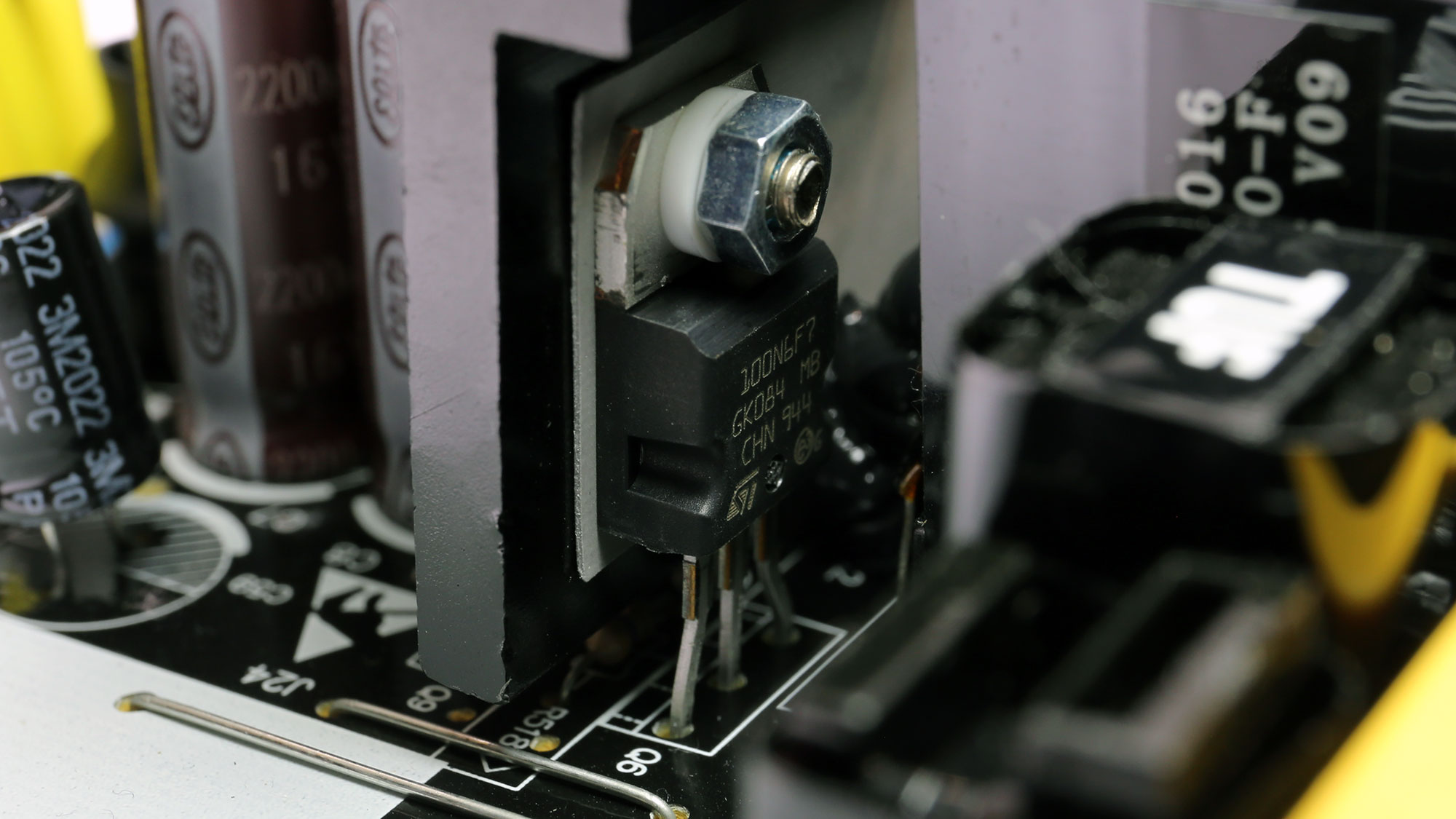
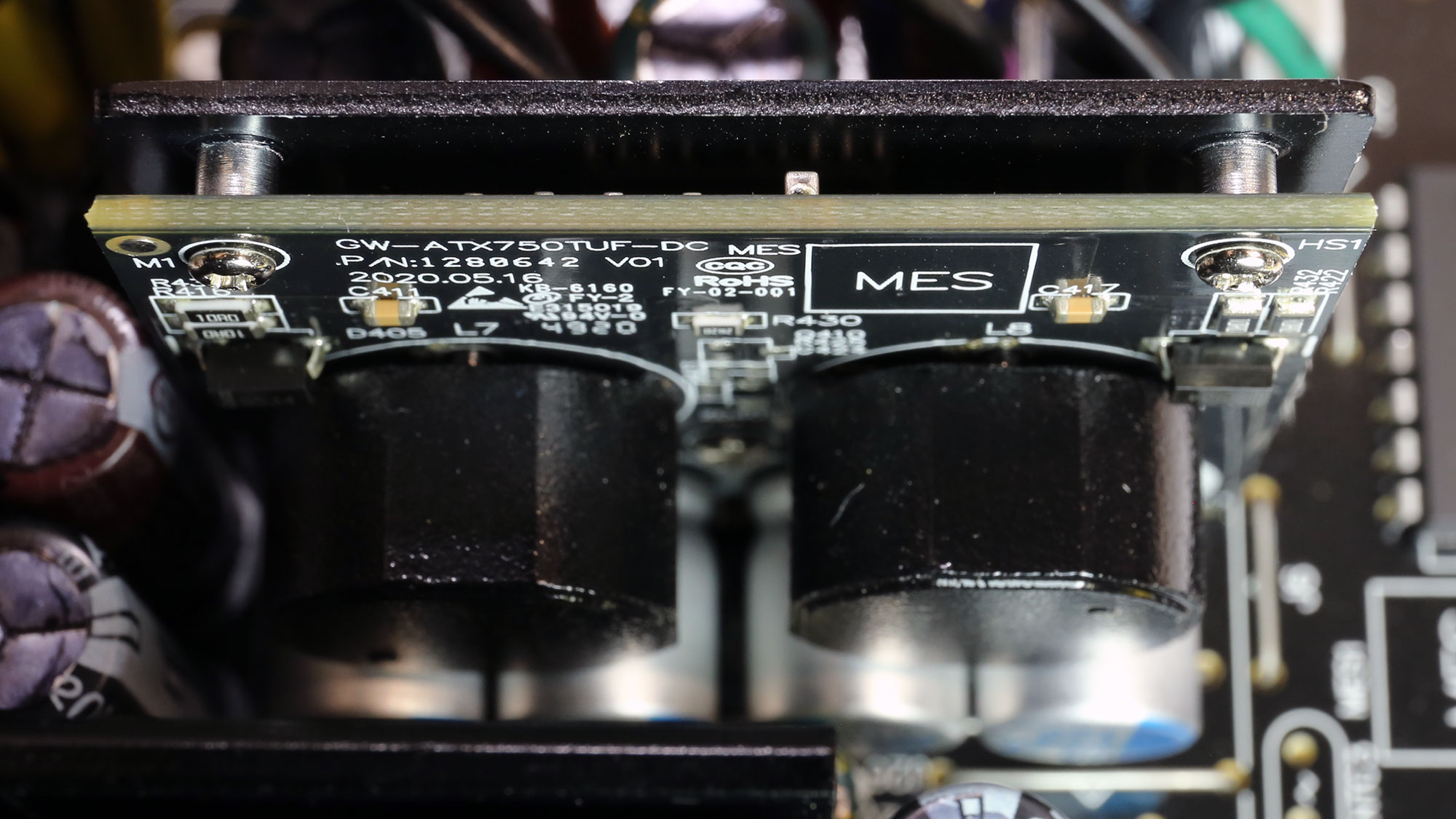
Two FETs regulate the 12V rail and a pair of DC-DC converters handle the minor rails.
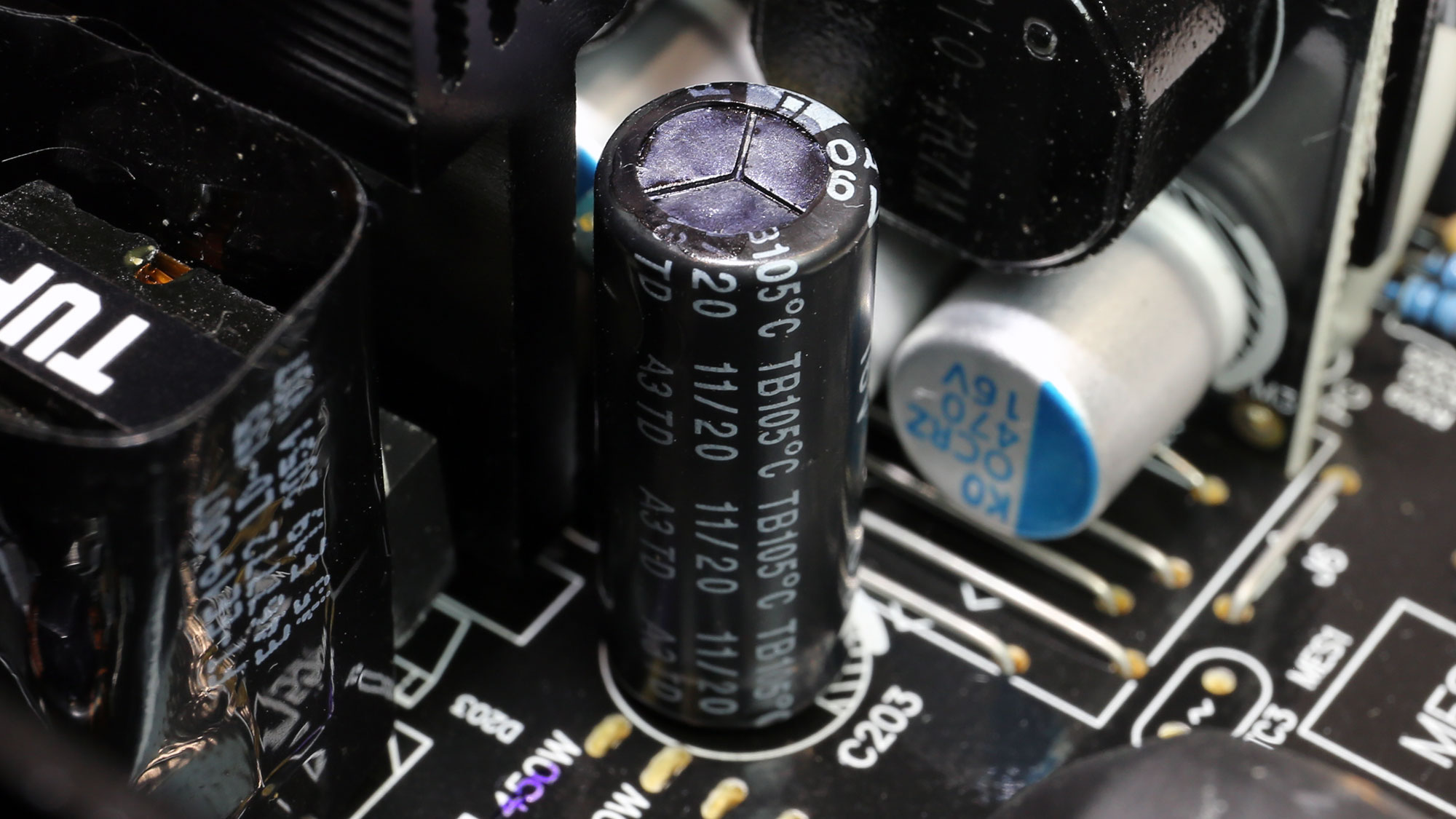
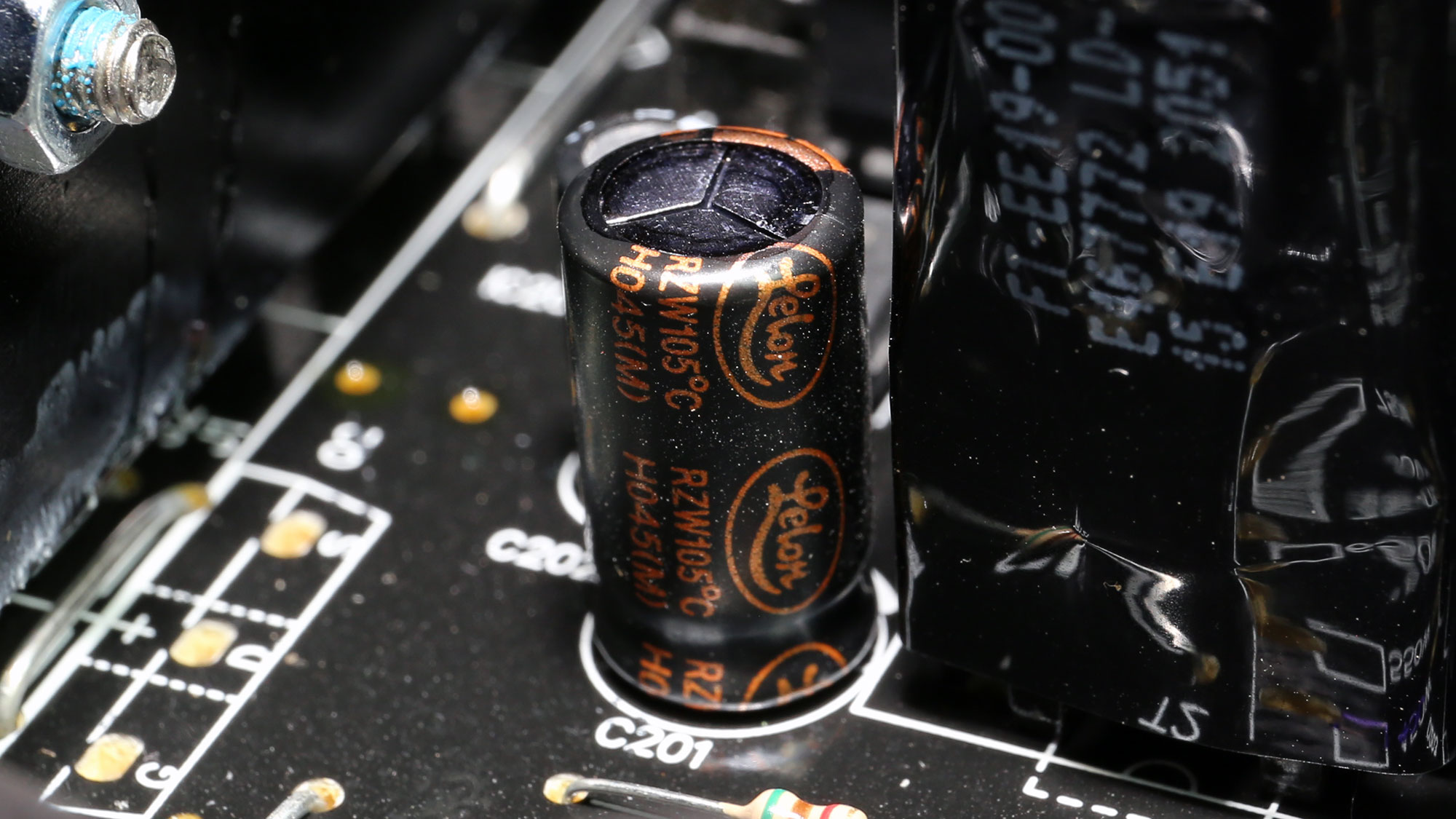
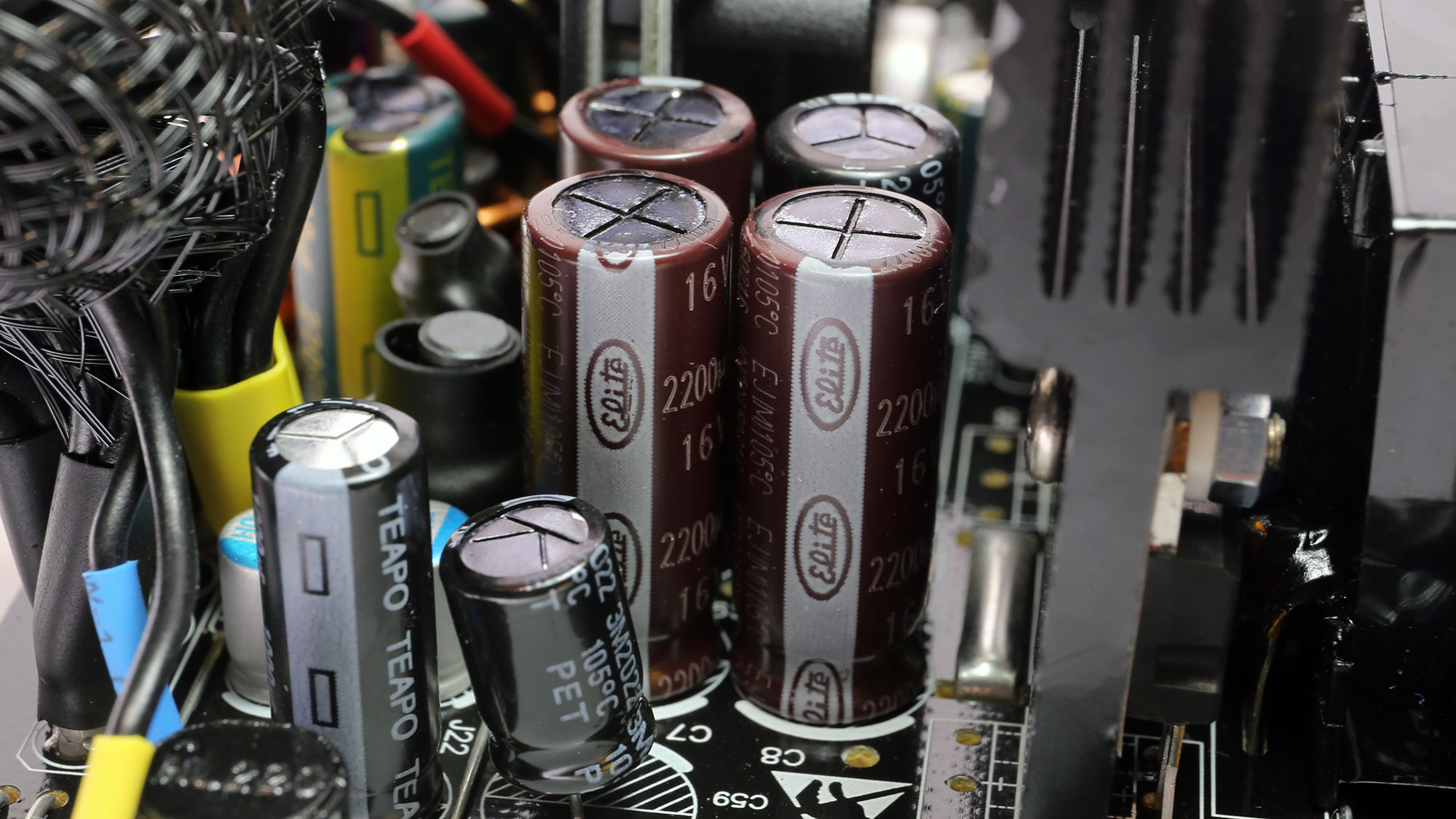
The electrolytic filtering caps are mostly by Elite and Teapo. In the 550W unit, we found several Lelon caps, which are inferior to similar-spec Teapo and Elite caps.
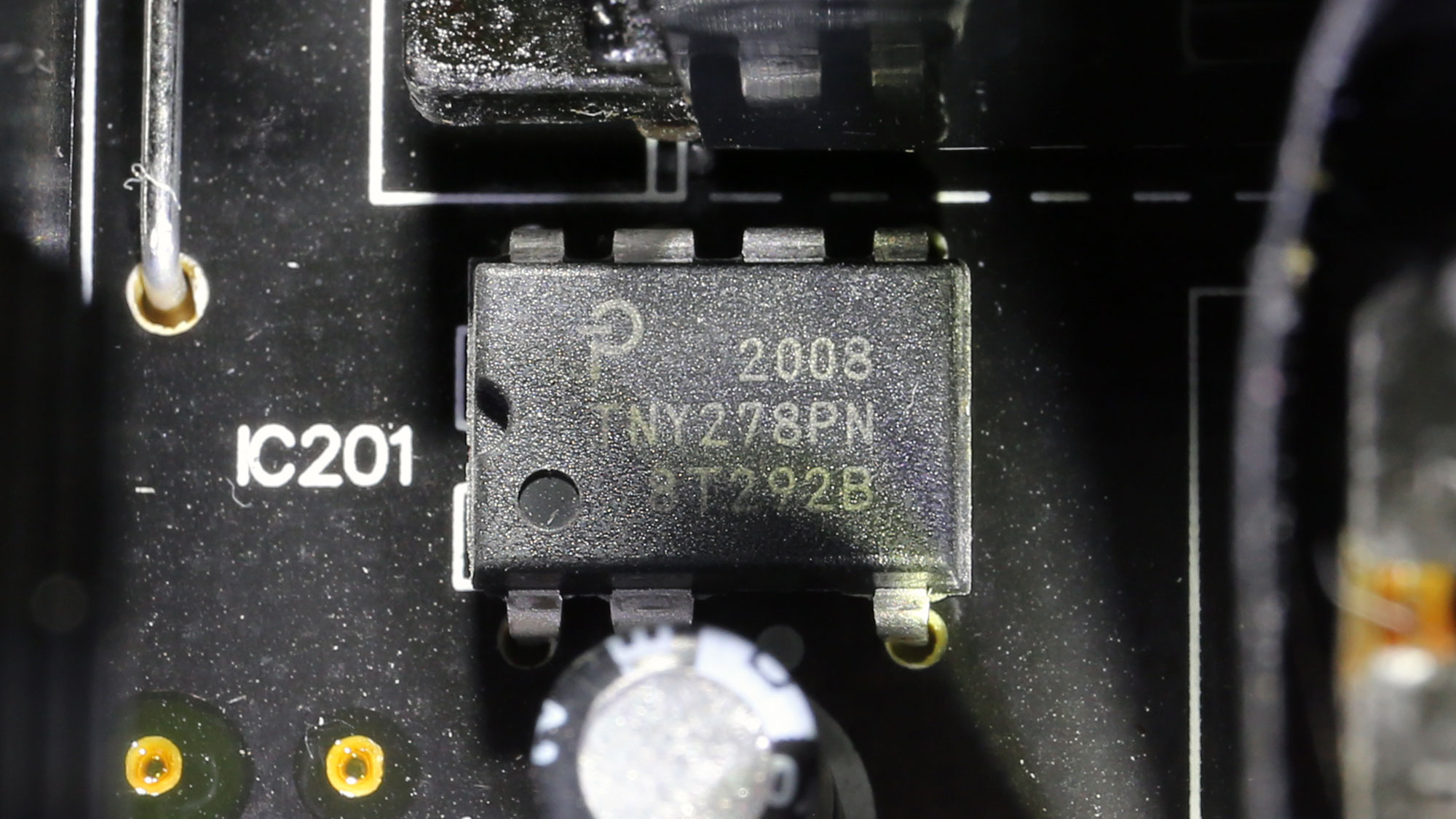
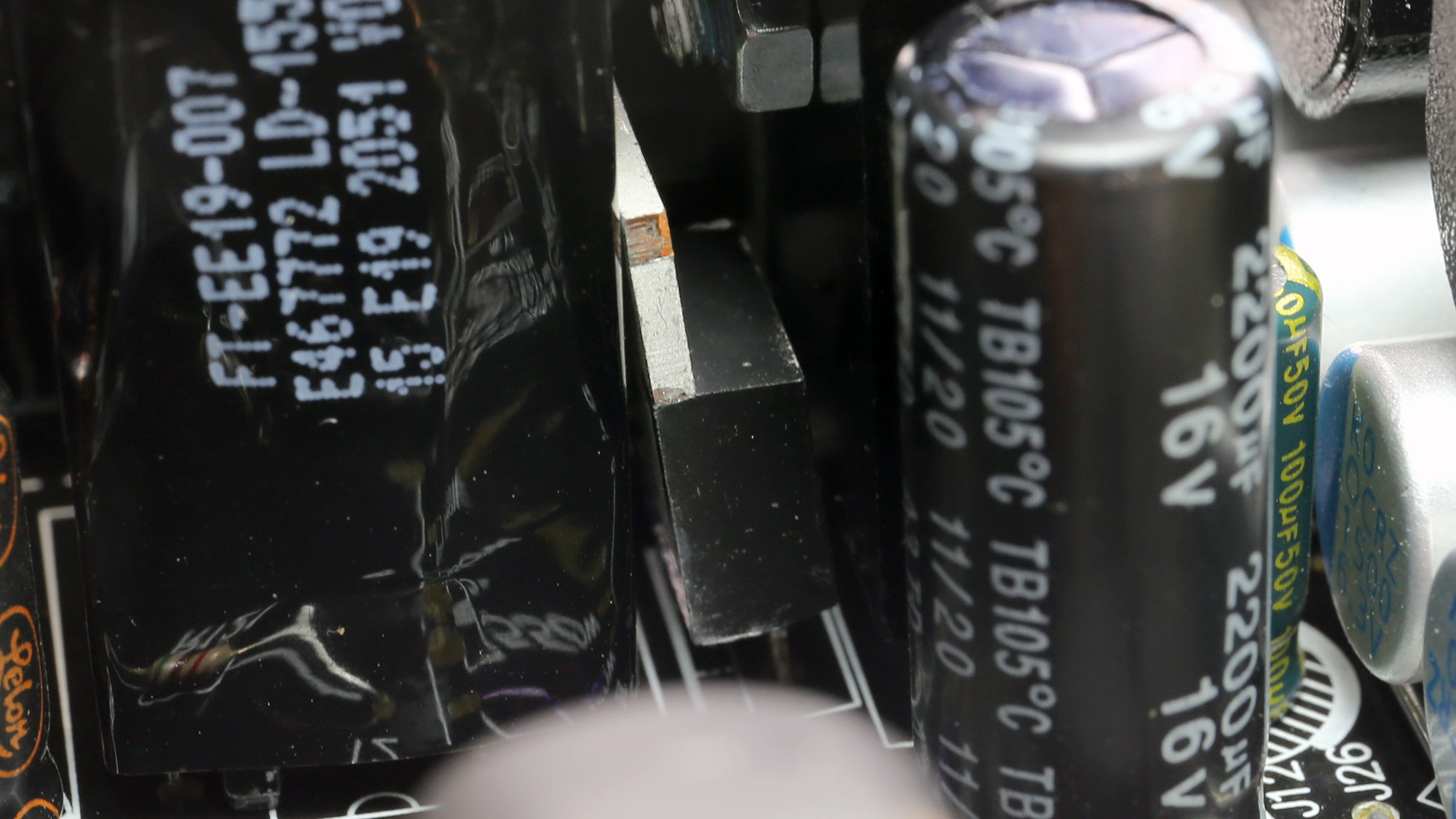
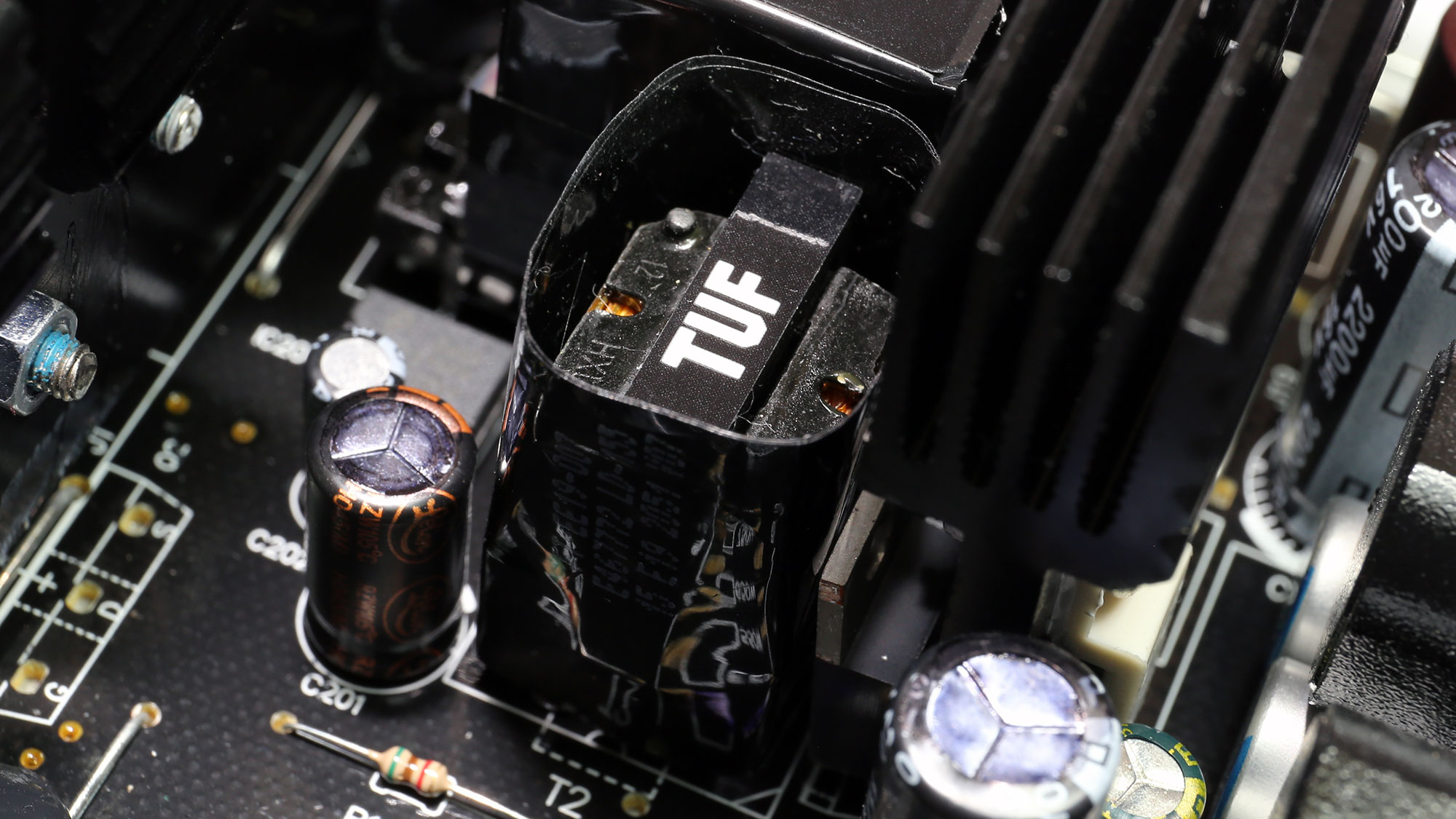
The standby PWM controller is a TNY278PN IC. The rectifier on the secondary side of this circuit is an SBR.

The main supervisor IC is an IN1S429I - DCG.
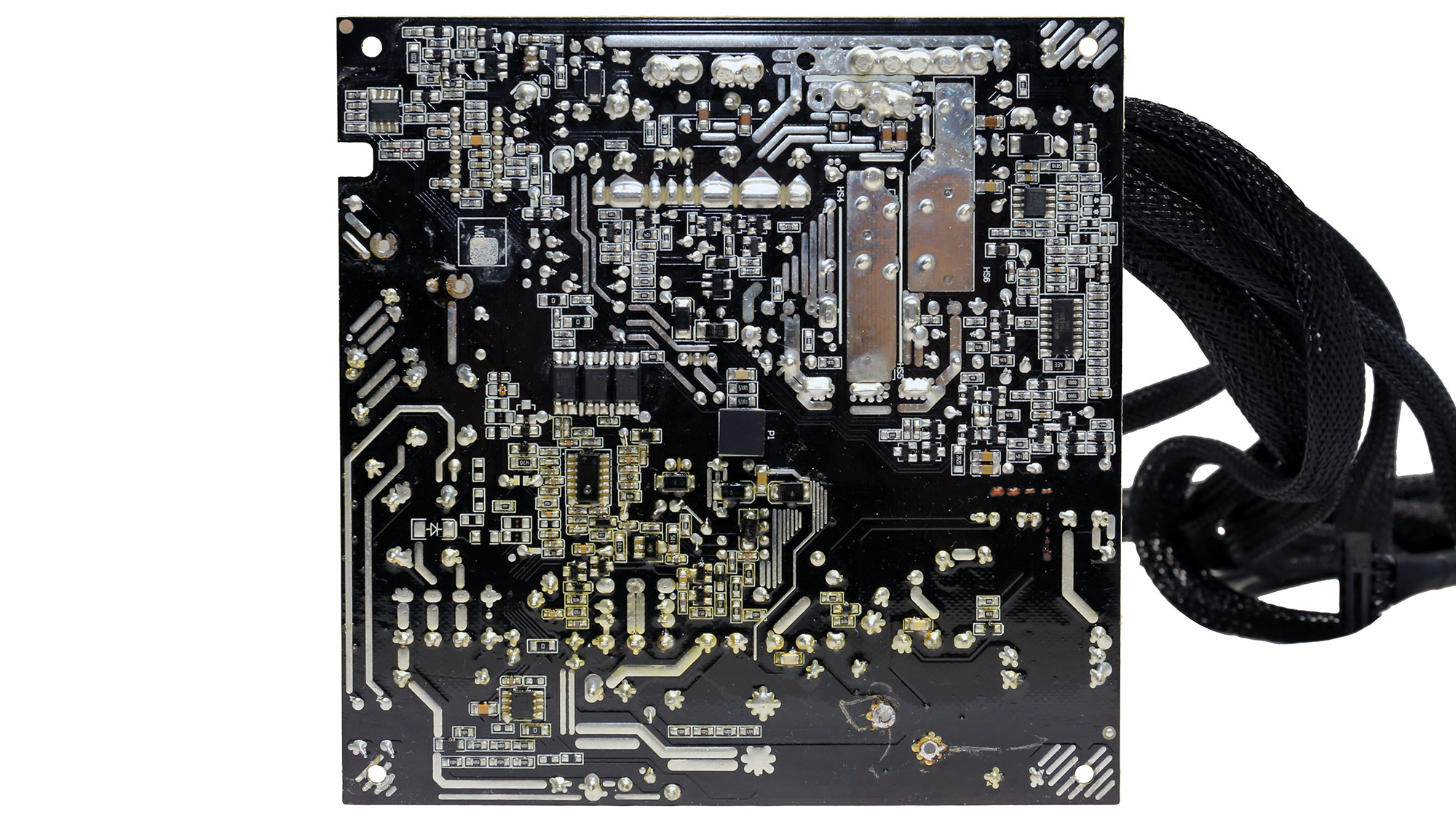
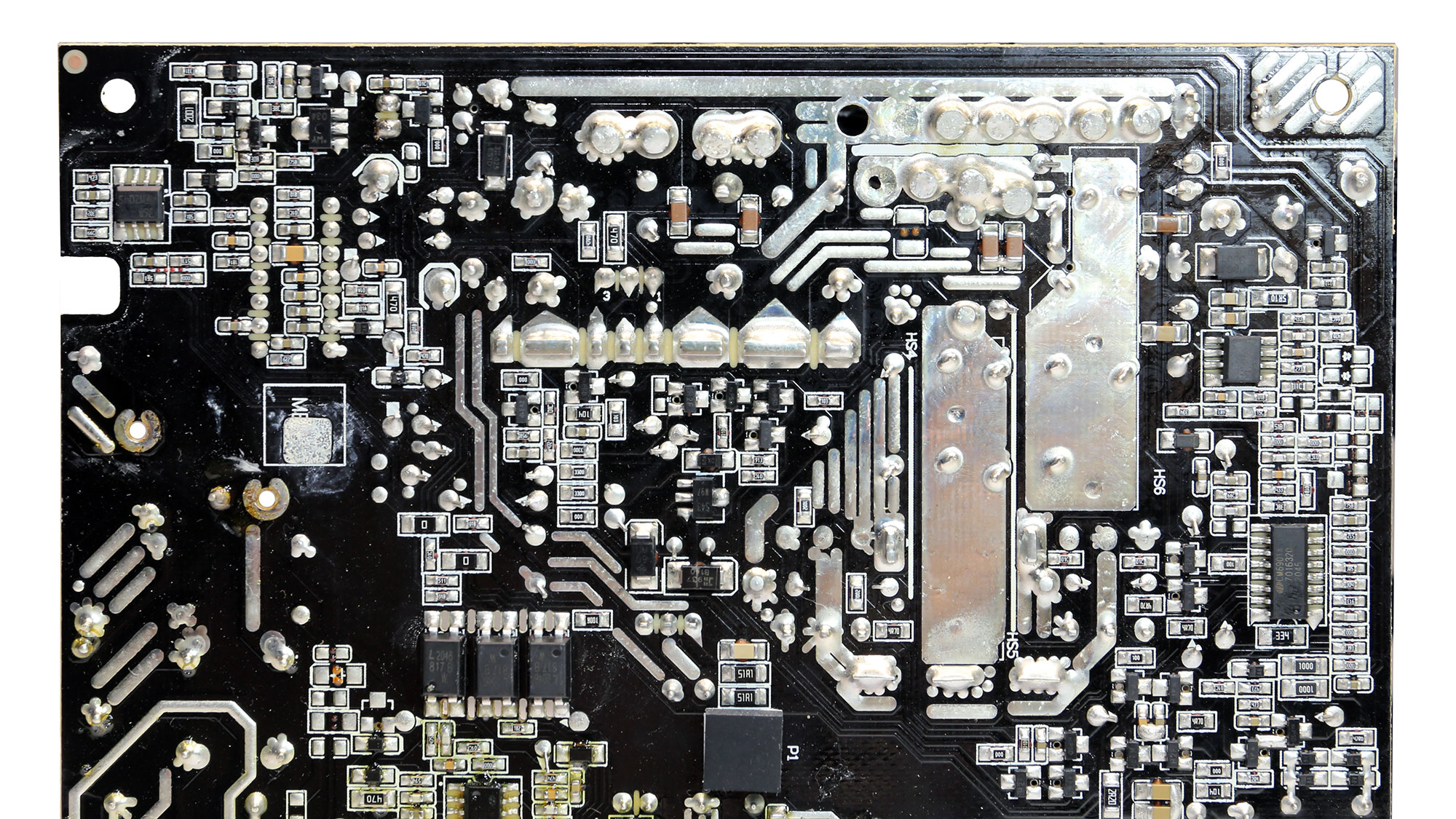
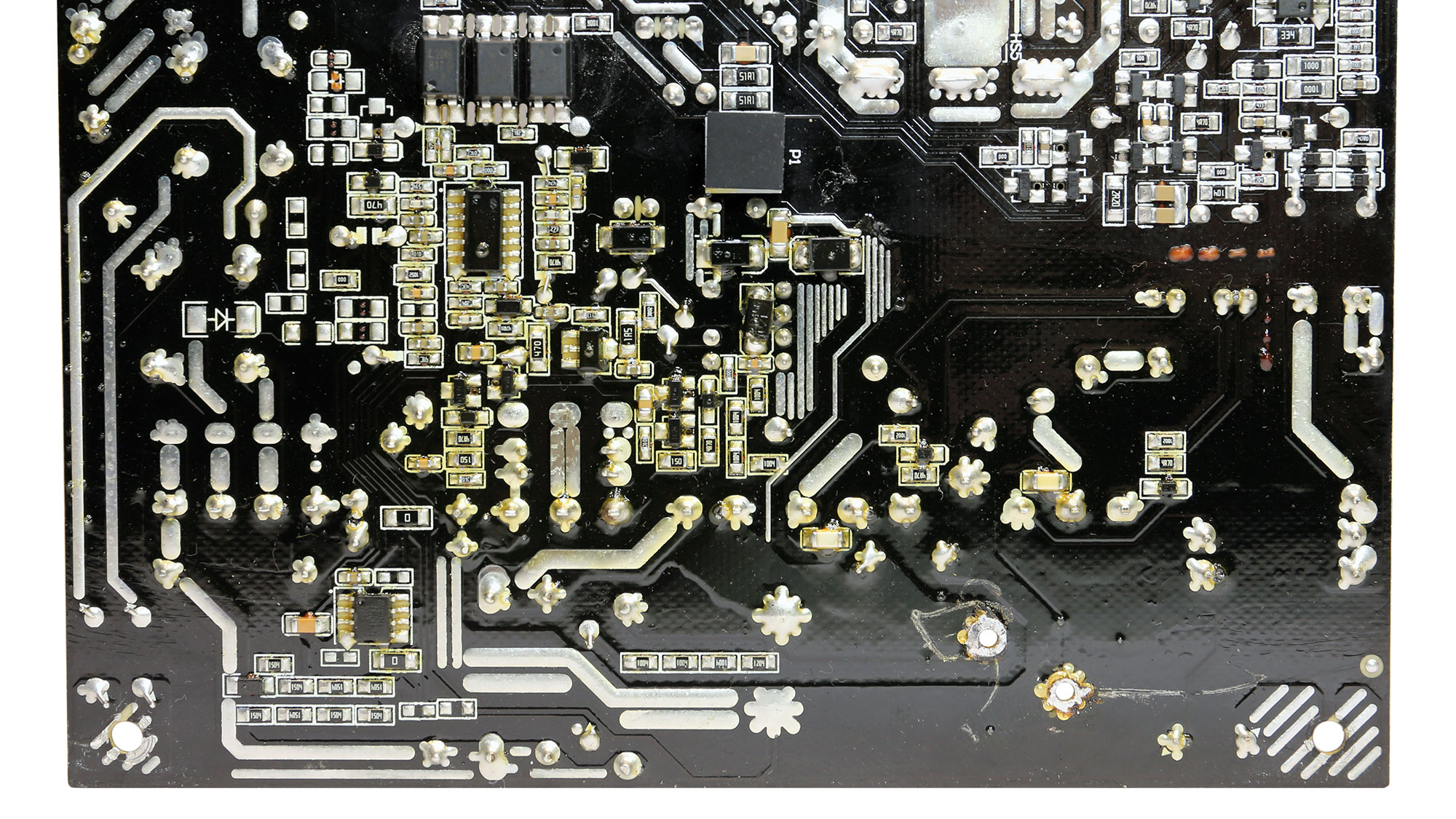
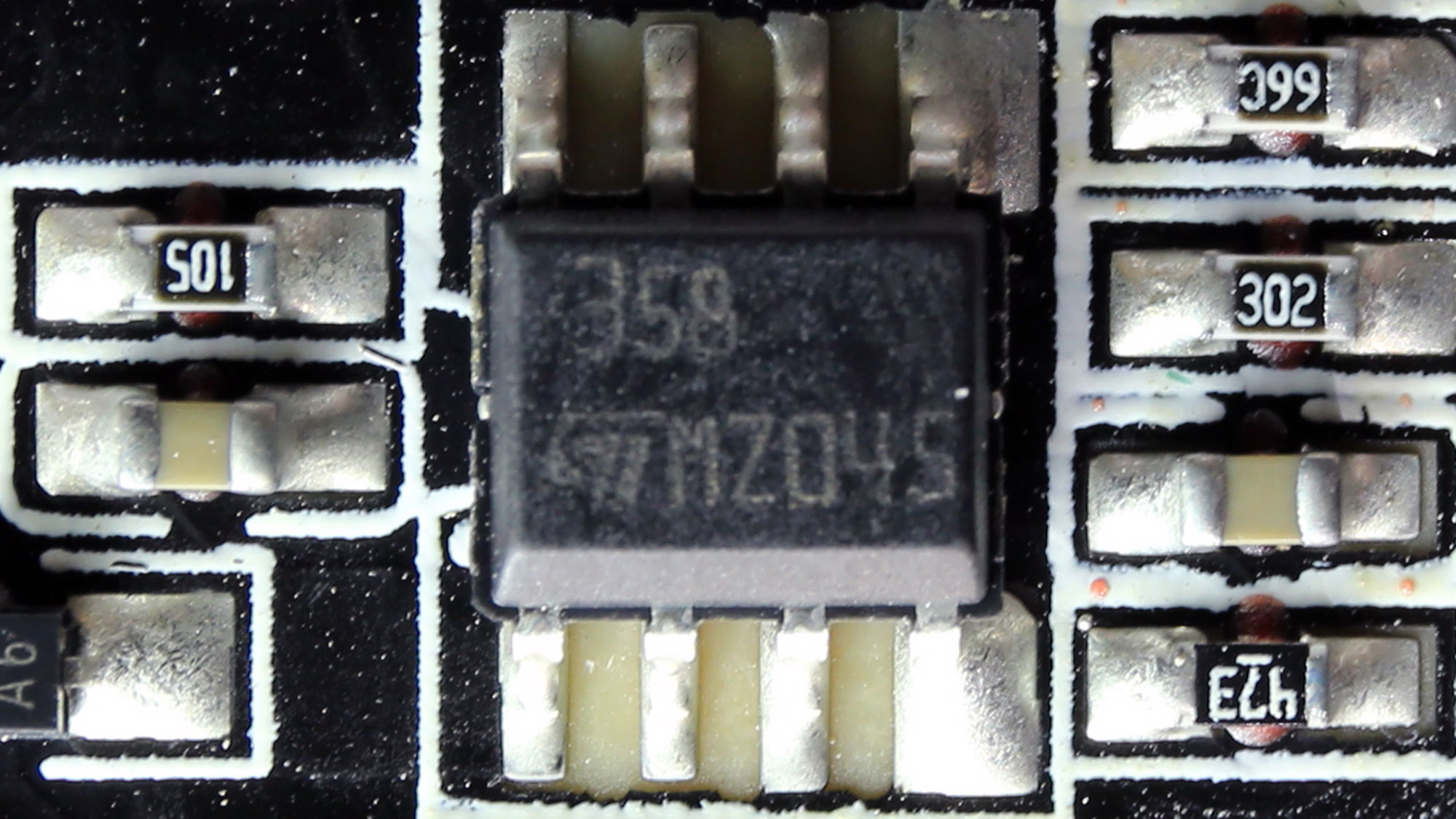
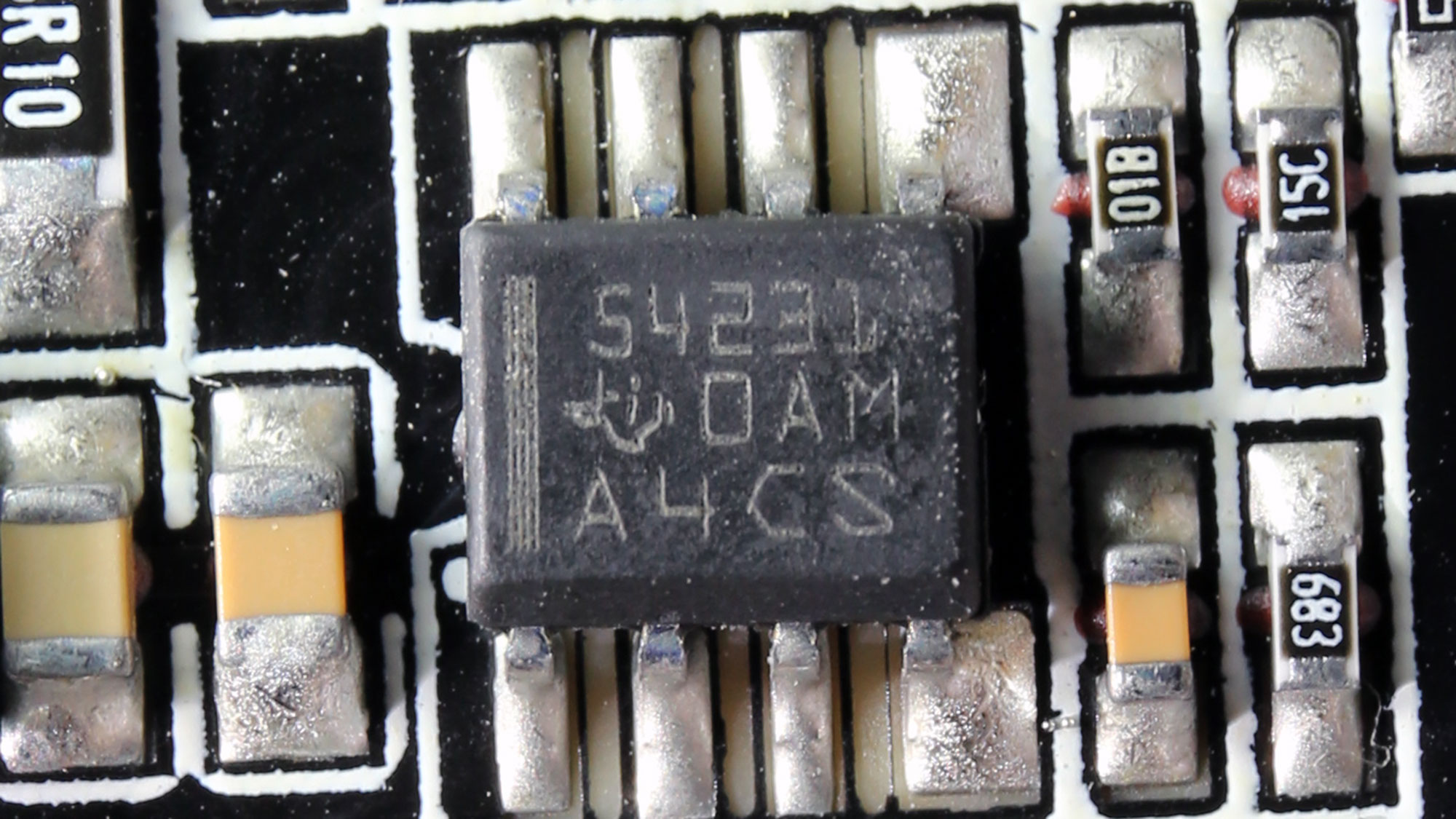
Soldering quality is good.
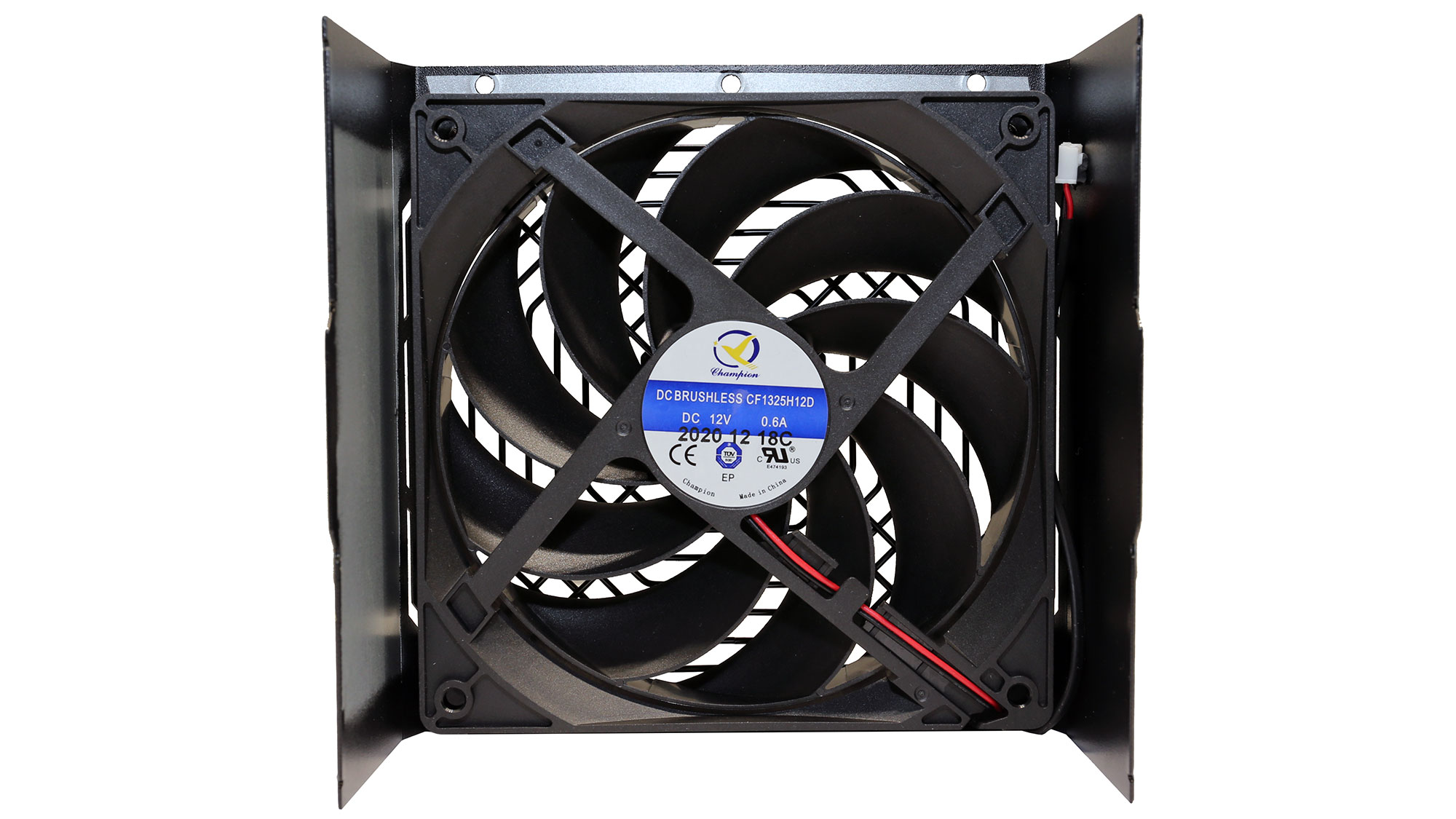
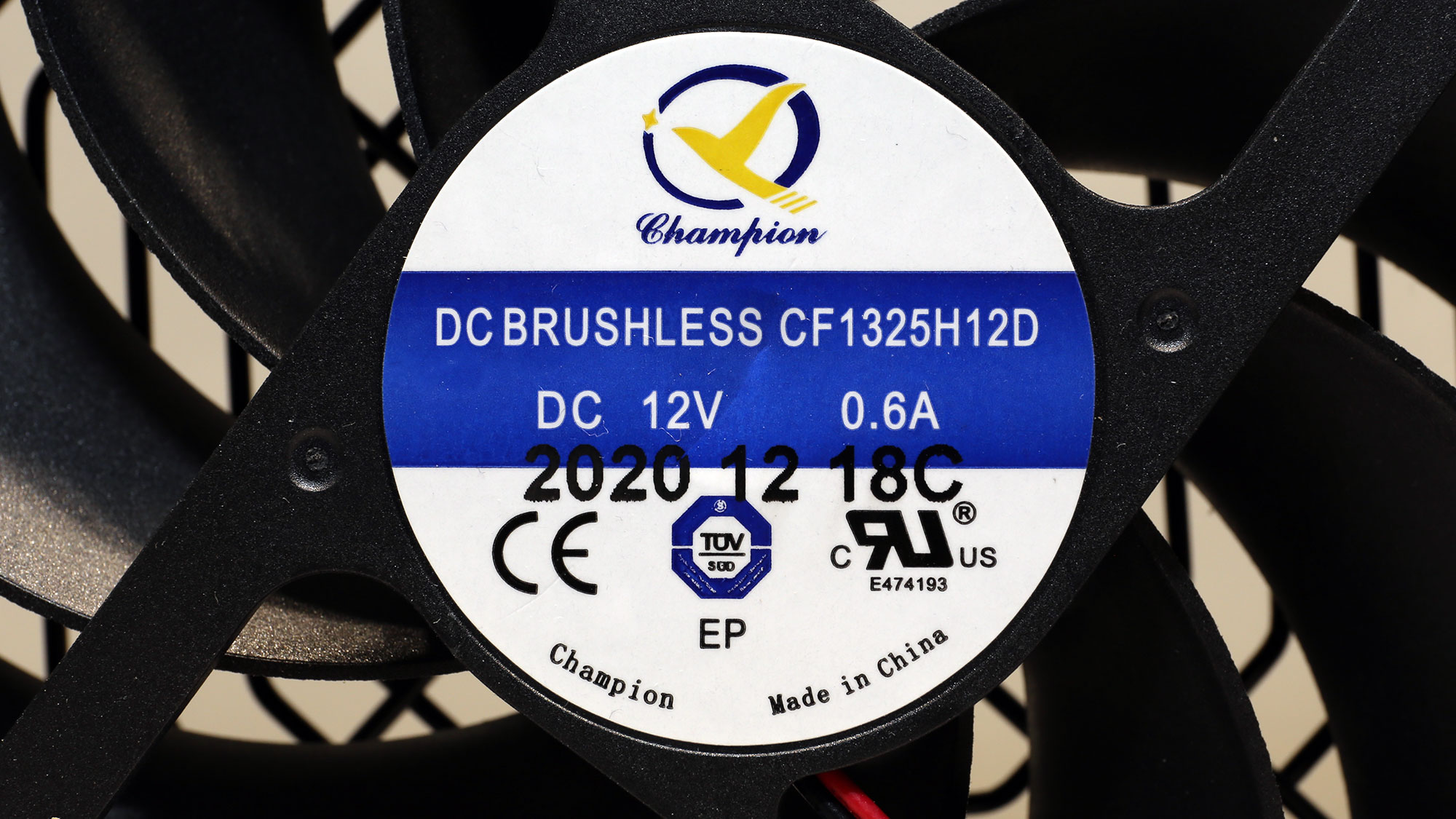
The cooling fan uses a double ball bearing. We usually find lower-quality fans in budget PSUs.
MORE: Best Power Supplies
MORE: How We Test Power Supplies
MORE: All Power Supply Content
Current page: Specifications and Part Analysis
Next Page Load Regulation, Hold-Up Time, Inrush & Leakage Current, Efficiency and Noise
Aris Mpitziopoulos is a contributing editor at Tom's Hardware, covering PSUs.